Read the first part of our sweet trip to Ioannina here…
We went to Elafotopos village, to Ano Pedina village, to Ioannina city, we ate, ate and ate again, and since we had some more days to spend in the city we felt that it was time to do something healthier. So, we decided to start our day with a nutritious breakfast and continue with a visit to Tzoumerka mountains, as we hadn’t headed towards there yet. There, in Elliniko Ioanninon village, we would seek an art hiking trail that Ms. Eleni Pagratiou had suggested. We thank her a lot for the great idea, as the hike was fantastic, you’ll see!
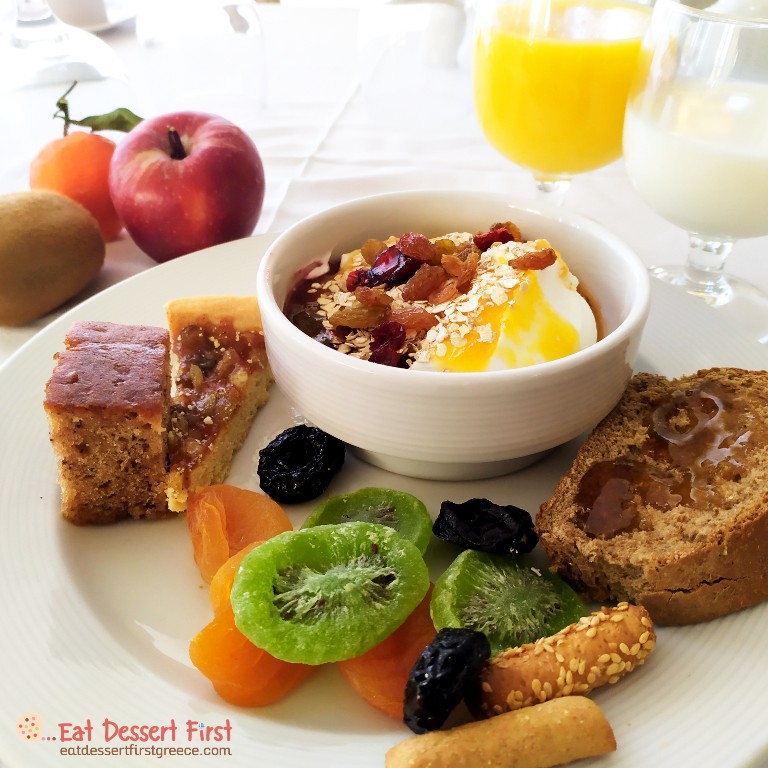
We filled our batteries with energy and headed towards Elliniko village in Northern Tzoumerka. In this quiet, mountainous village, in a serene environment with a majestic view to Tzoumerka mountains, there is a contemporary art museum. Did you expect that? It is the “Theodoros Papagiannis” Museum of Contemporary Art. On the road to the village, we saw sculptures emerging in our way…
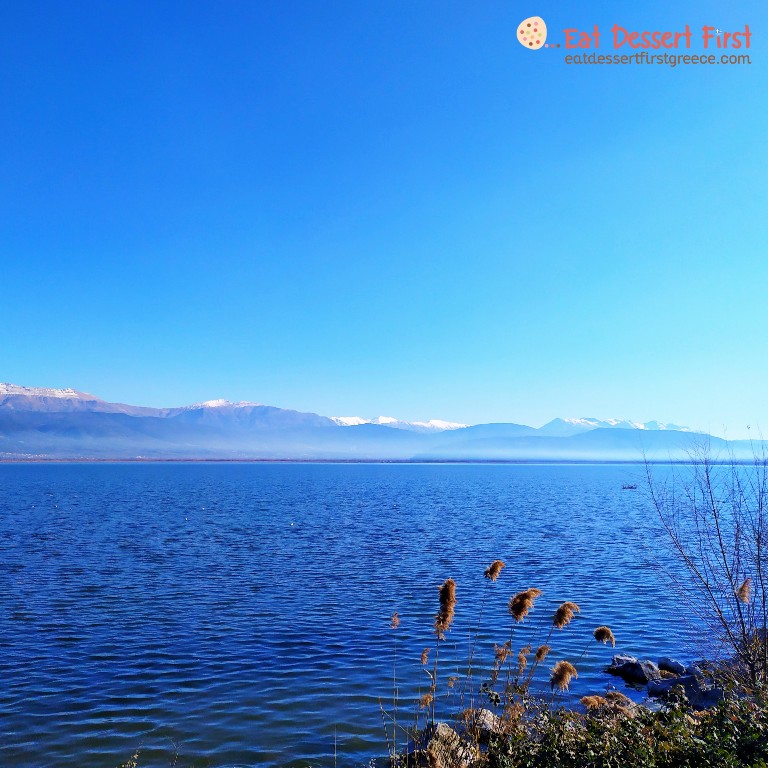

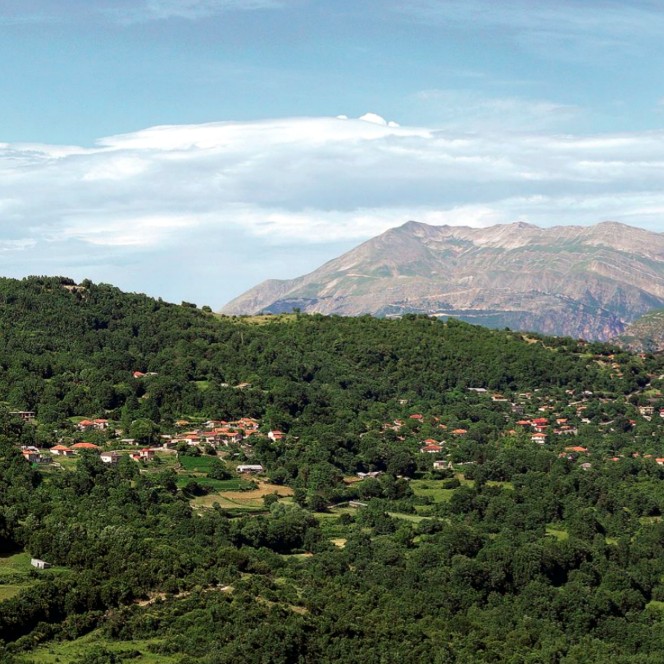
We knew that the museum houses selected artworks by sculptor Theodoros Papagiannis, from his student years until today, artworks that speak about Epirus and its history, about the bread, the benefactor, the emigrant, the spiritual man, the Epirus worker, the sheperd, the farmer, the long-suffering Epirus mother, and at the end about education, as we read in the exhibition’s catalogue. However, we didn’t expect at all what we saw. A playground with scattered sculptures among swings and slides, and in the background the mountains…


Τhe explanation for this original spectacle is that the museum is housed inside the village’s school, and the playground is its yard. This was the school Papagiannis had gone to and is still working today. This means children have lessons and play in the yard among works of contemporary sculpture! As for the breathtaking view surrounding them every day, there are just no words to describe…

At the entrance of the museum we saw a work of art that made an impressiοn on us, because of the eco message it conveys. It was the “dragon that eats those who cut the trees”.
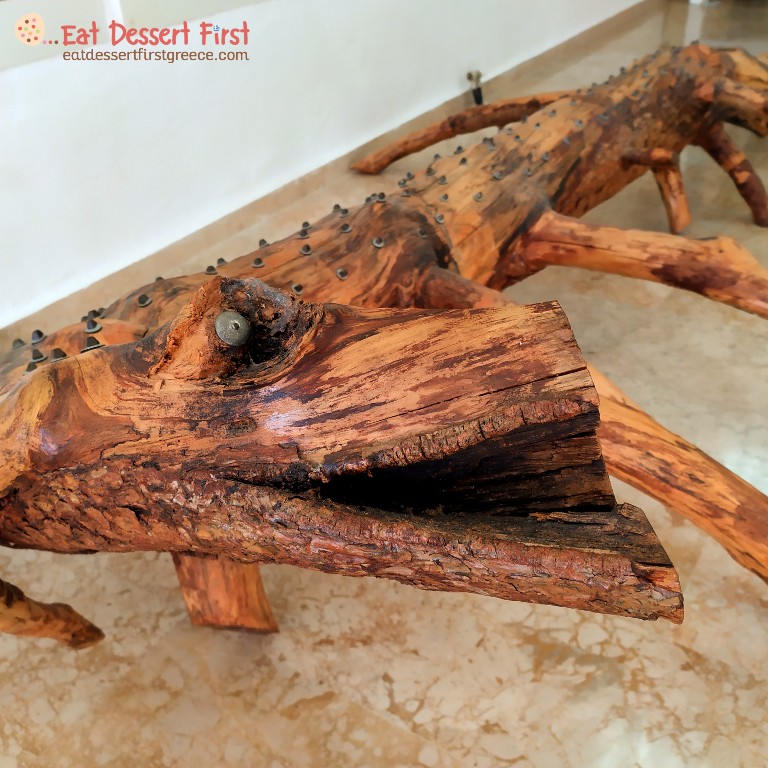
We went up to the first floor and met the museum manager Niki Giannatsi. Of course we asked her to talk to us about the museum. She told us that downstairs operates regularly a school with six students and that the second floor was closed for many years until Papagiannis decided to donate his works, wanting to give life back to the old, stonebuilt building.
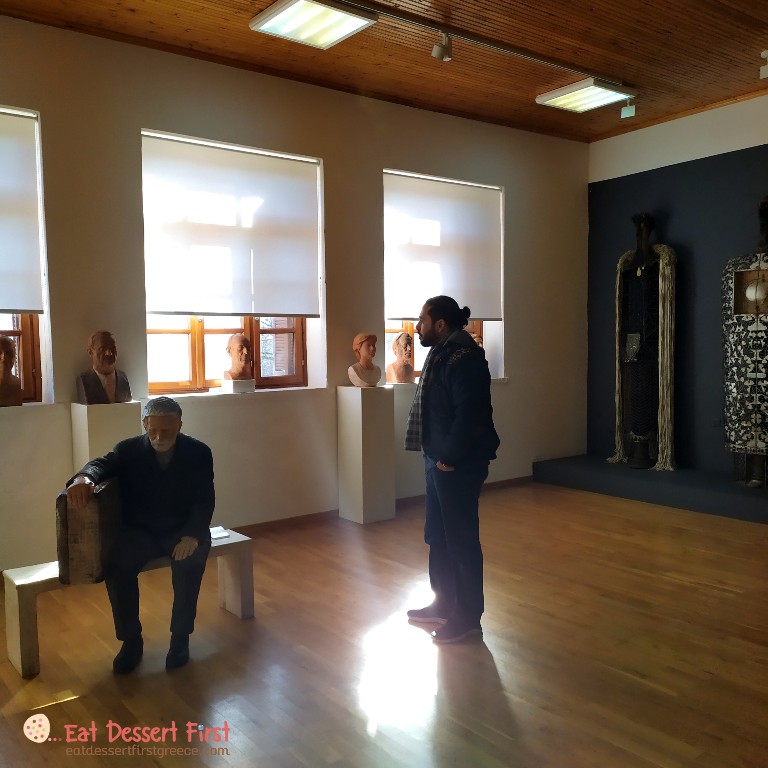
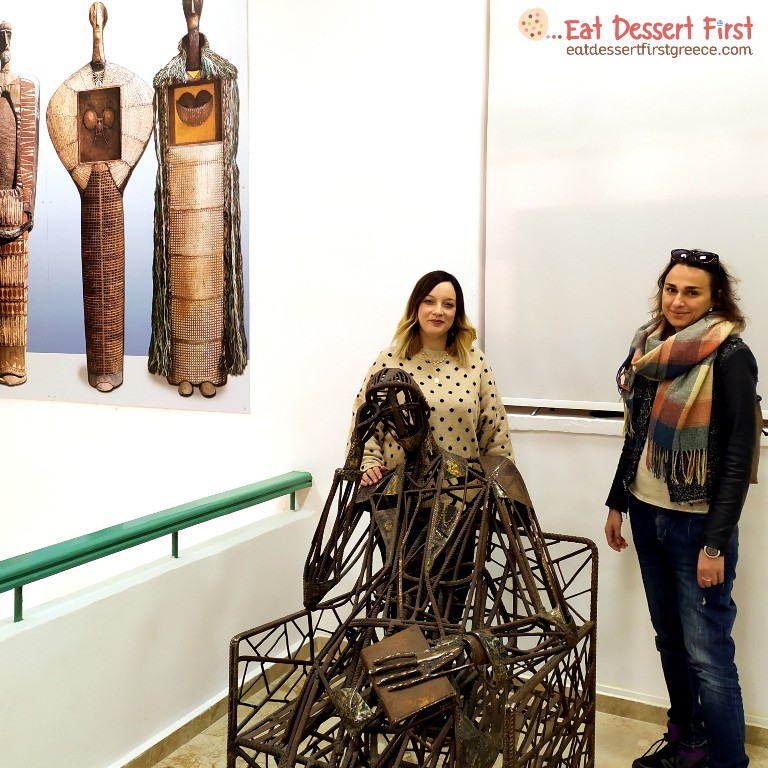
The yard’s artworks come from the sculpture symposia the museum organises every year. For twenty days, invited artists work in the yard and when their creations are finished they are placed there or by the hiking trail.
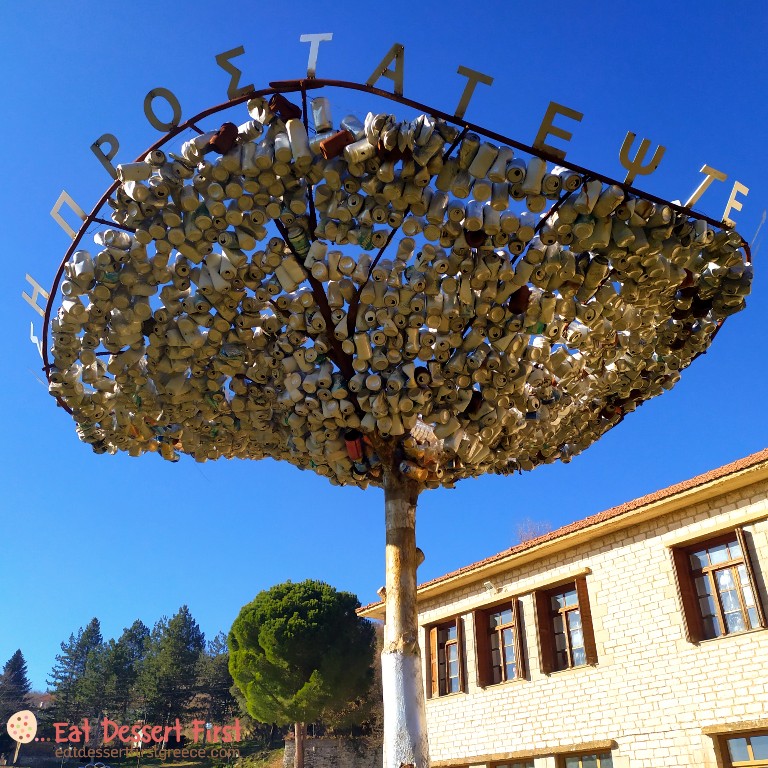
The hiking trail starts at the museum and ends at the Holy Monastery of Panagia Tsoukas. Ms. Giannatsi told us that tsouka means mountain top and that the monastery was named like that because it stands at the end of the trail. So, we started our hike according to our motto “Be fit to eat sweet” with the aim of reaching the monastery, at the highest point of the trail.
Going up, we came across many sculptures scattered among the gorgeous nature of the mountain, a truly unique spectacle. Because an image is worth a thousand words, especially as far as art and natural beauty are concerned, we will let our photographs convince you that you must visit this place and go on the art hike we discovered! We’ll tell you a secret… When you get to the monastery, the calmness you will feel and the view you will see will be unforgettable!
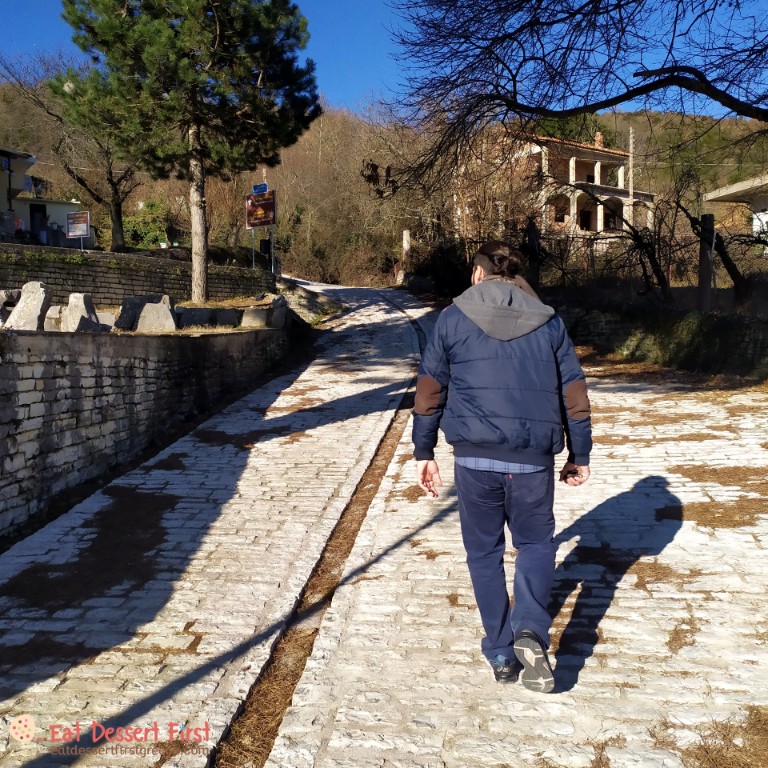
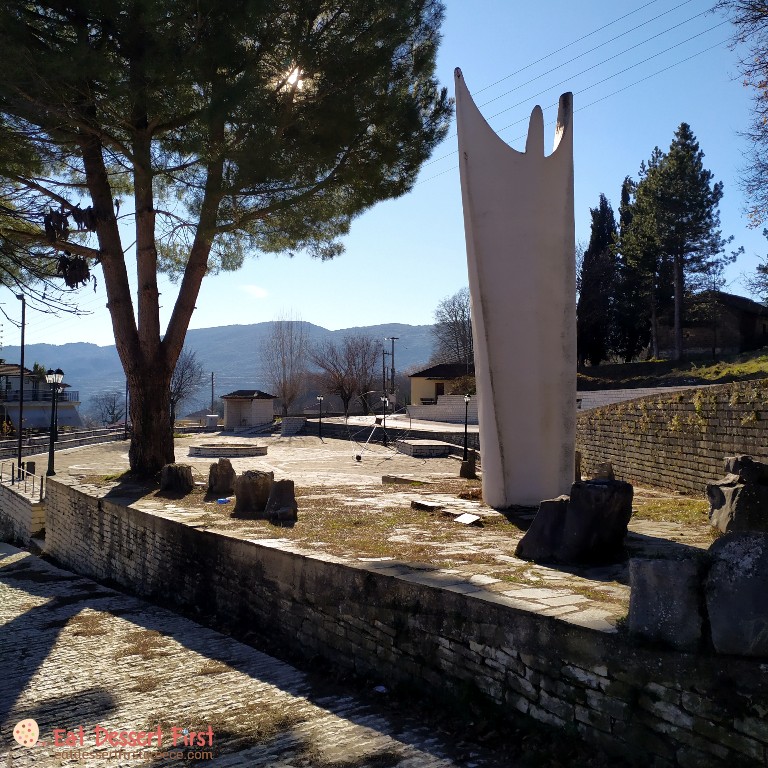
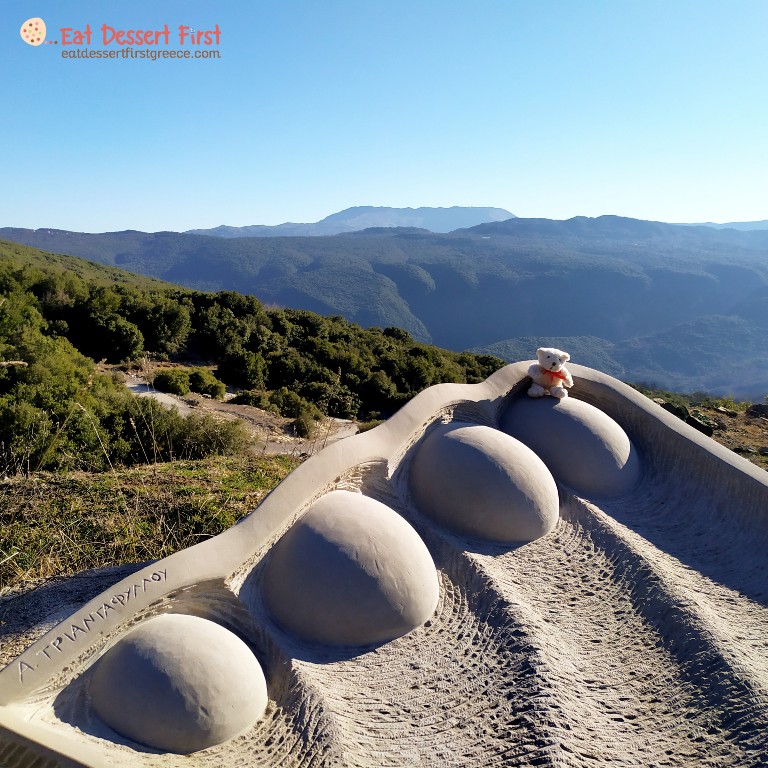


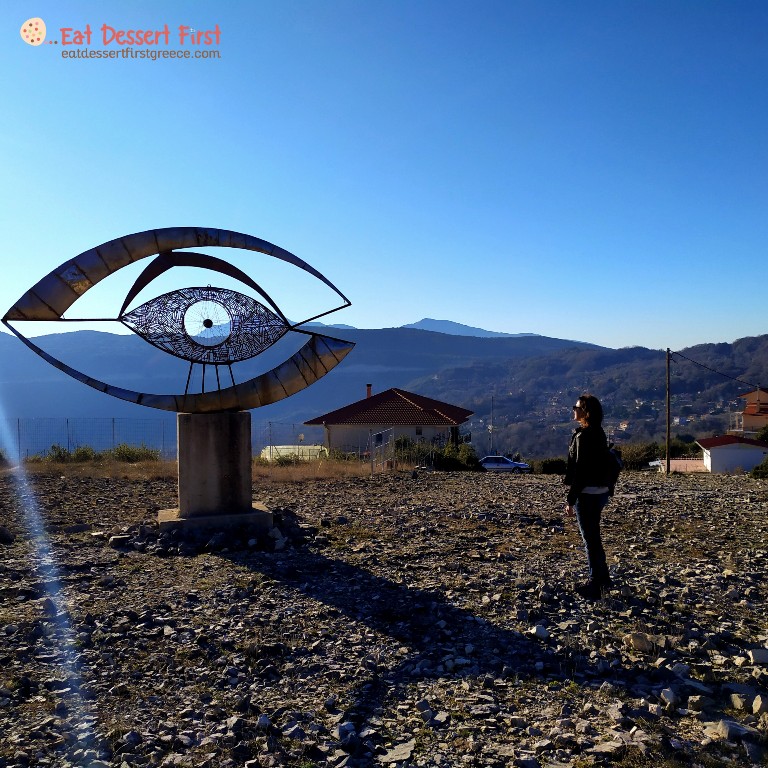
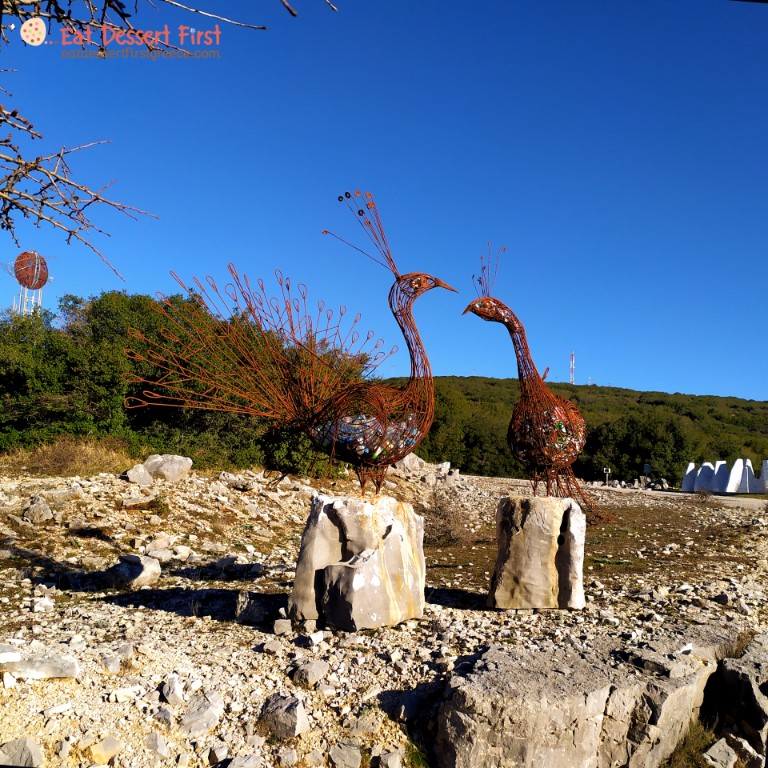
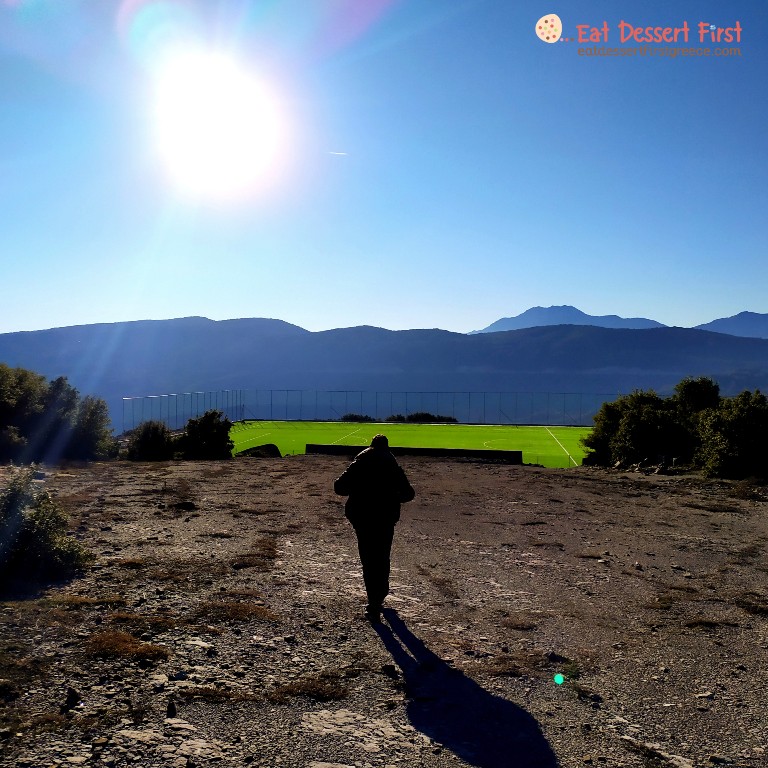
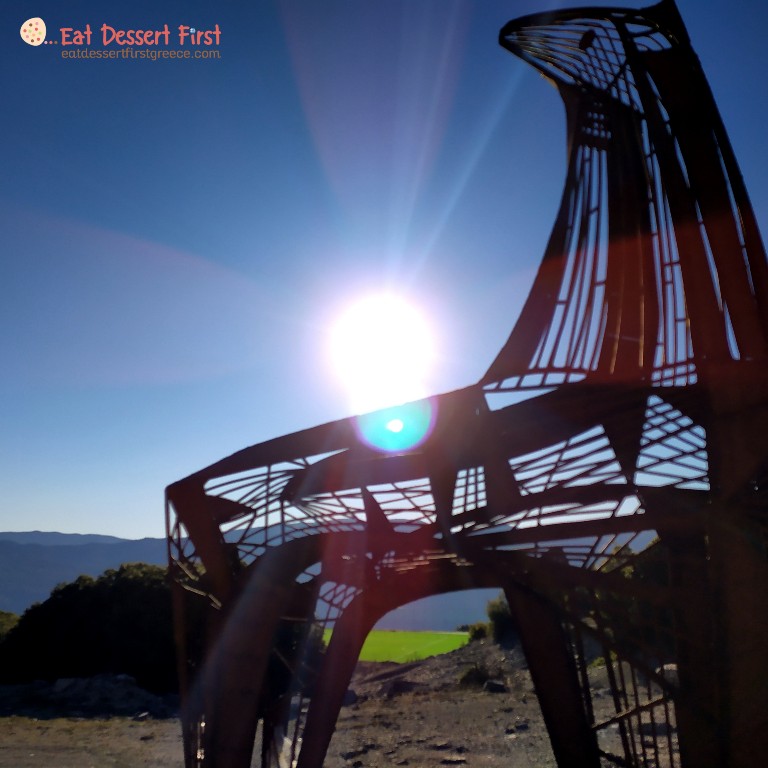
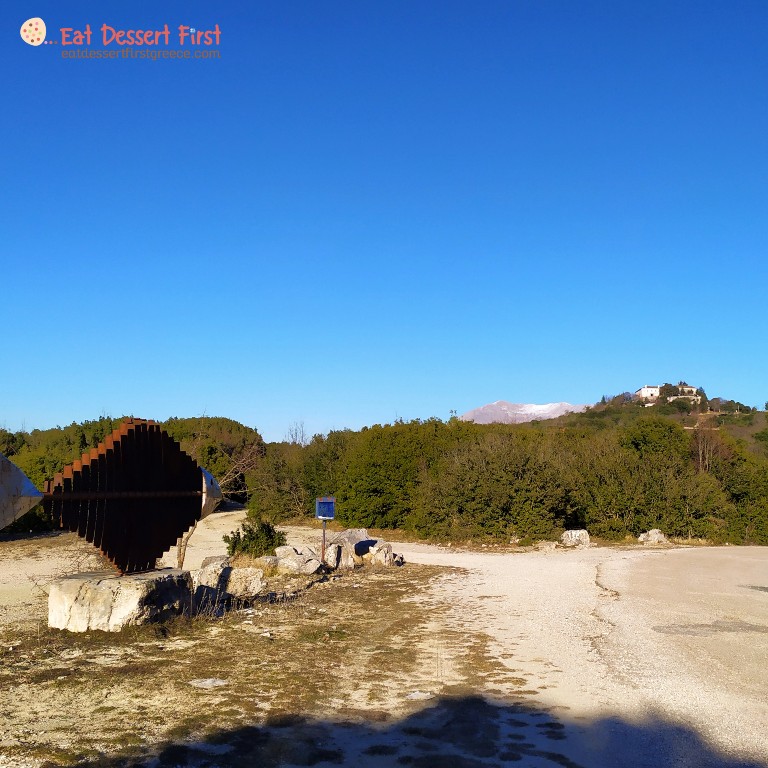
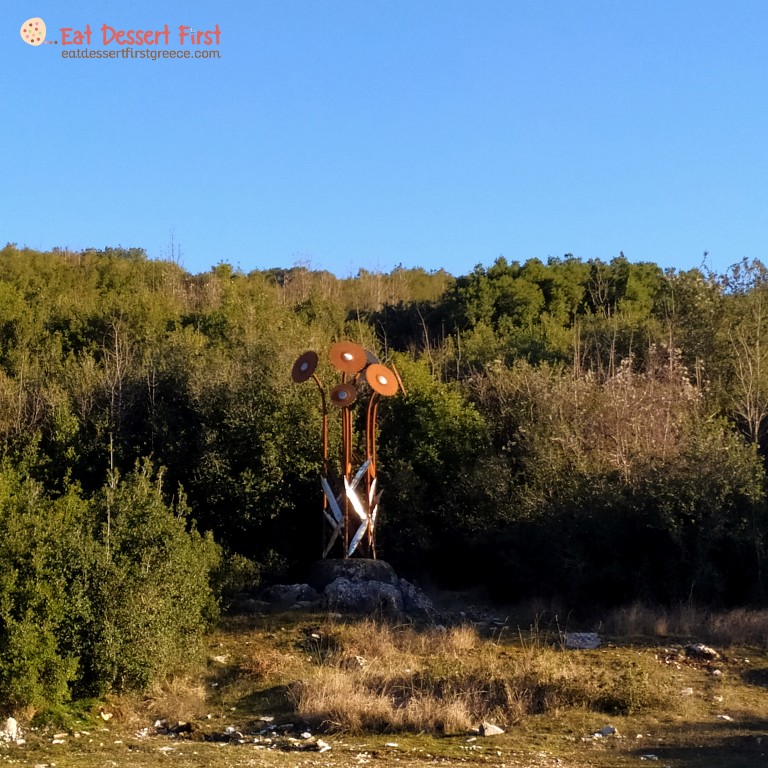

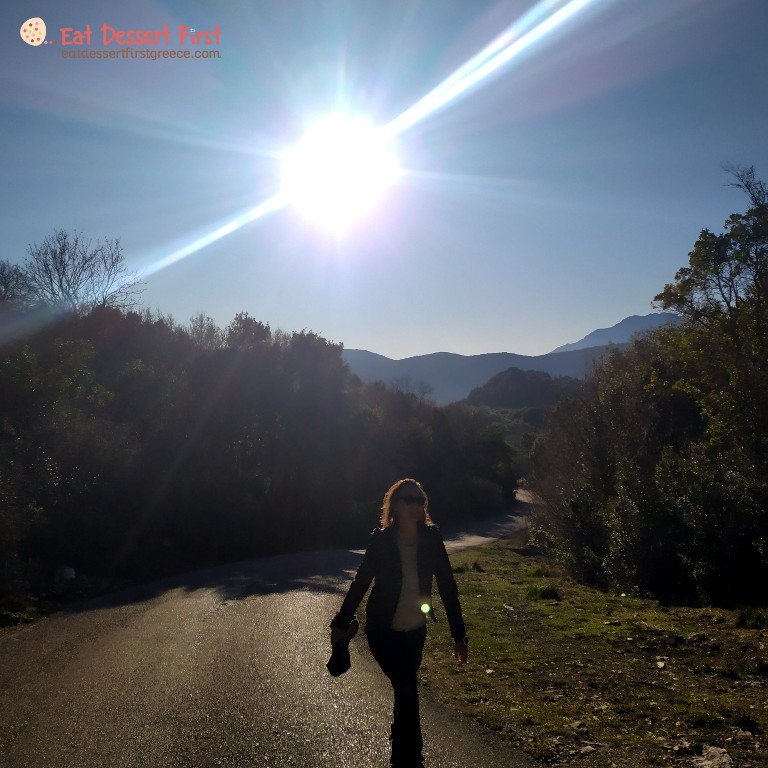
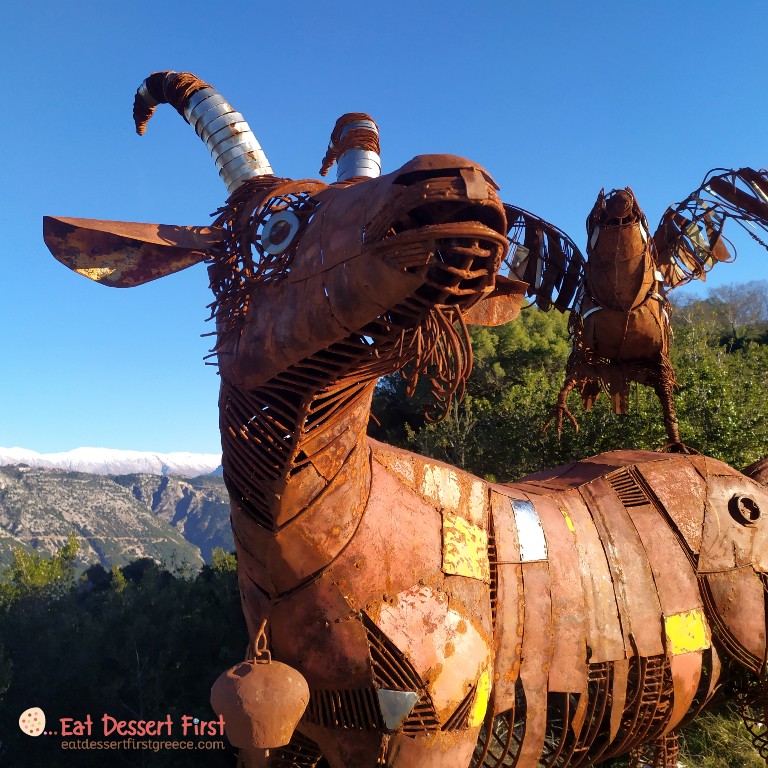

At a 850 meter altitude we found the Holy Monastery of Panagia Tsoukas, a male monastery, one of Epirus’ most beautiful and important ones.
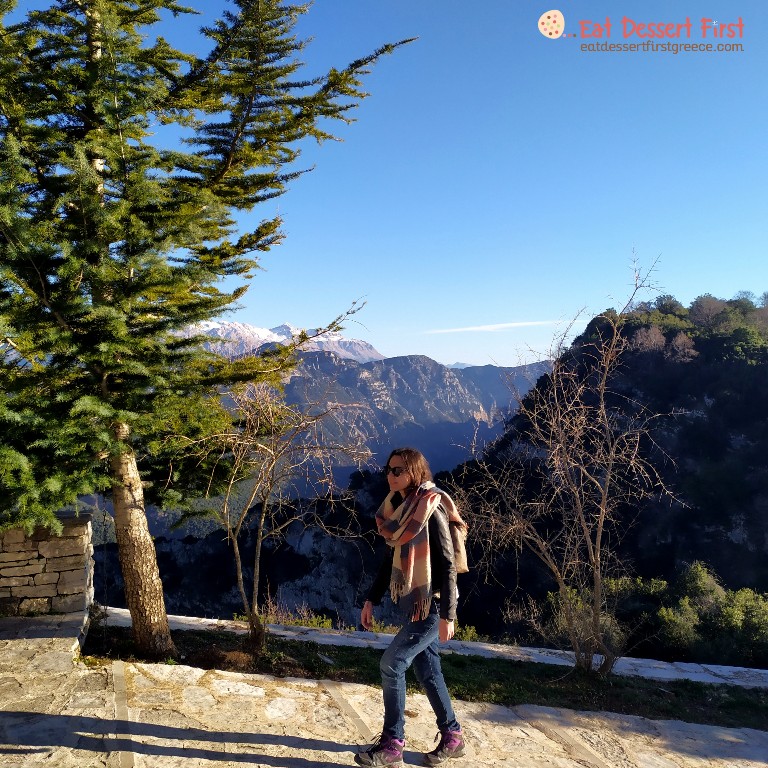
According to an informational board near the entrance to the monastery and the website of the Municipality of Tzoumerka, the monastery is dedicated to the Nativity of Mary. It was founded in 1290 by emperor Isaac B’ Aggelos Komninos. Inside the monastery 19th century frescos are preserved, painted by Ath. Ioannou, a priest from Kapesovo village, Zagori. During Ottoman Rule, the Holy Monastery of Panagia Tsoukas housed the school of Elliniko and played an important role in the Greek Revolution of 1821 as a shelter for the Greek rebels. Its reputation increased thanks to the miracles of Virgin Mary and the thermal water, which according to poet K. Krystallis was valued all over Epirus.
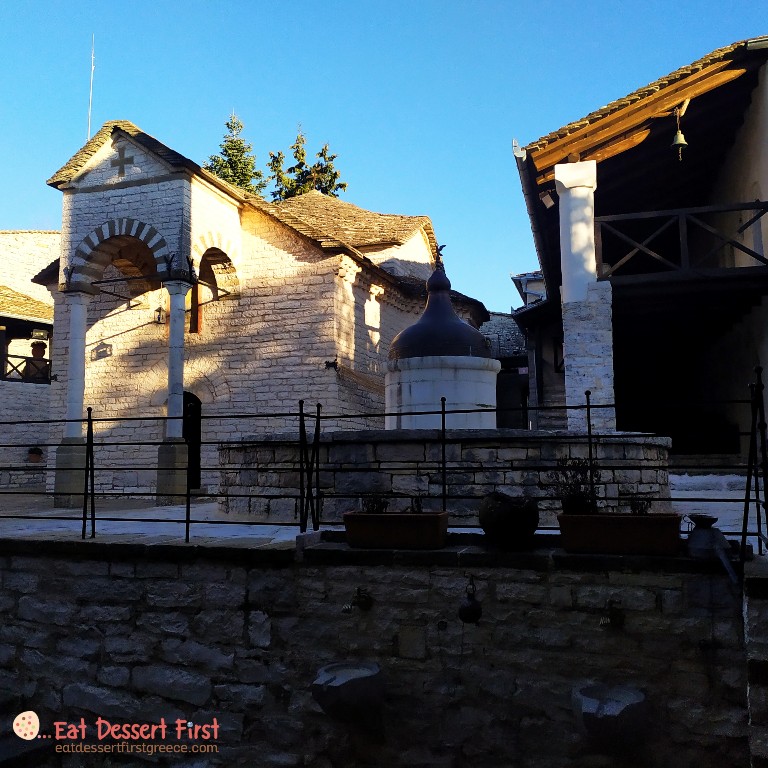
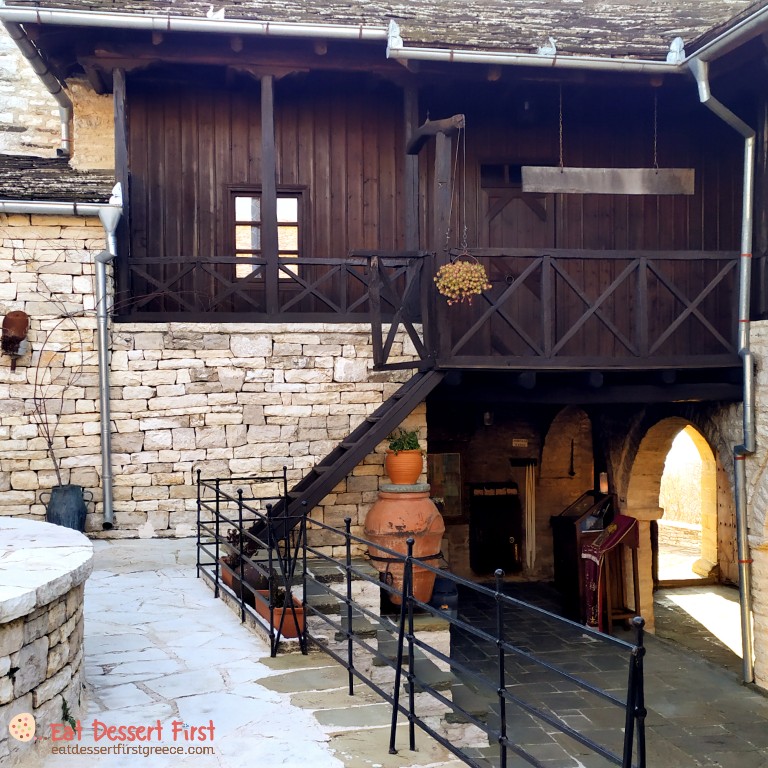

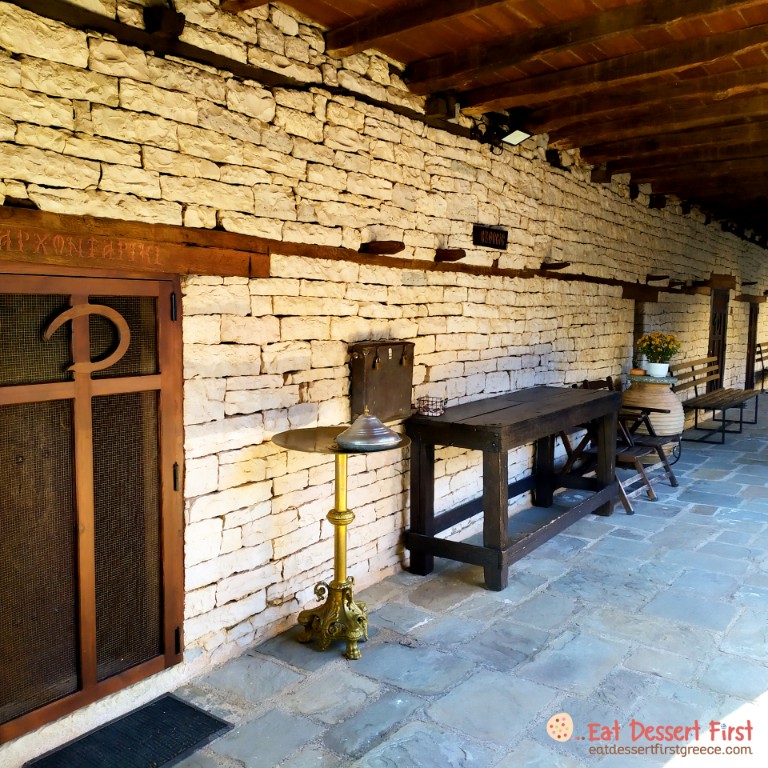
At the back side of the monastery there is a balcony. We got closer and saw a breathtaking view of Arachthos gorge, with a depth of 470 meters. The out-of-this-world view, along with the absolute quietness create a unique feeling that truly rewards the trouble of going uphill until the monastery.
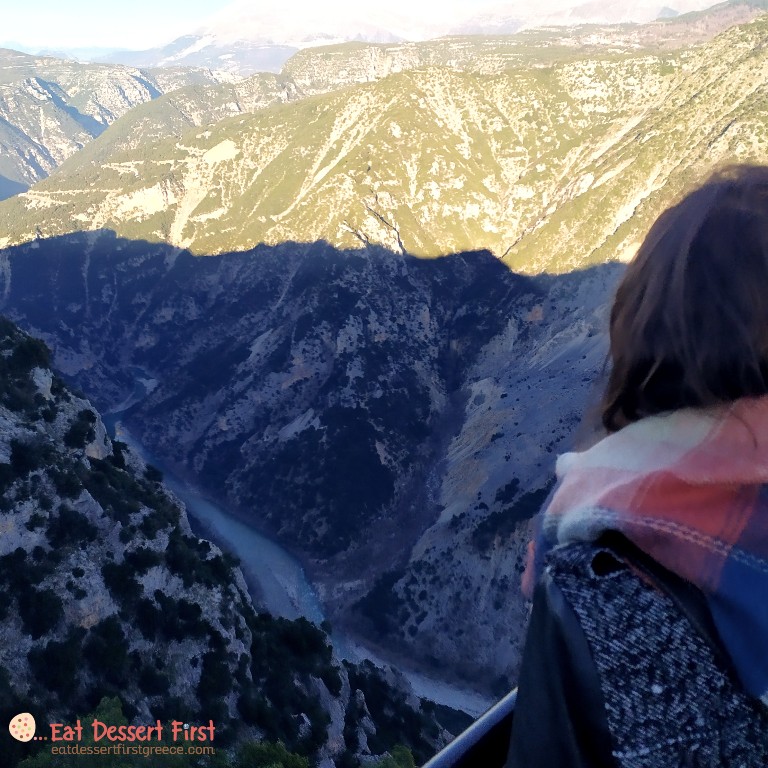

On the way back, a very good man came to talk to us, Mr. Aimilios Patsiouras. It was a very pleasant surprise, as we get excited to listen to the personal stories each person has to tell us.

We told Mr. Patsiouras that we had visited the Papagiannis museum and he told us that he went to school there as a kid. He told us that the school was built in 1936 by benefactor Mantelopoulos and it was spacious, airy and sunny.
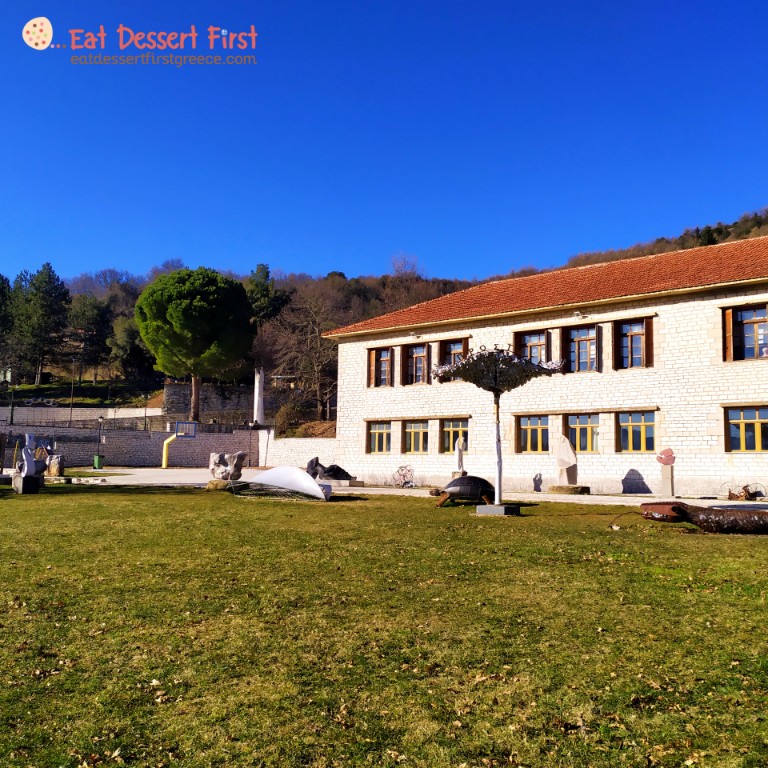
Today he is the director of the secondary school and high school of Pramanta Ioanninon village. He told us that his school has 26 pupils and 26 teachers, among whom special education teachers too. For Mr. Patsiouras, a teacher has to “live” with his pupils in the classroom like a pupil himself and create a warm, friendly pedagogical environment. Also, it is very important to him that teachers help kids get off their mobile phones and technology that rules their everyday lives…
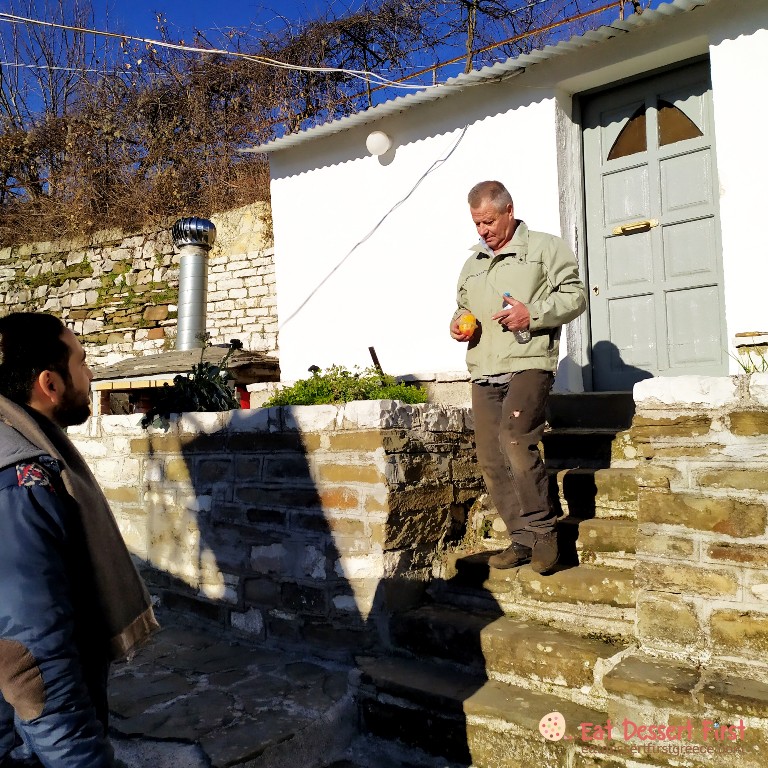
We were very glad to hear that Mr. Patsiouras feels very happy with his life, his place, his educational work, his agricultural jobs, his own products. He is very proud of his daughters -the younger one entered the School of Education Sciences in Ioannina University with a grade of 19.2/20 and the older one is a philologist and works in Ioannina city. Mr. Patsiouras also writes articles about tradition in the newspaper Voice of Elliniko which is sent to everywhere there are fellow villagers, from Australia to the USA. He is very happy that people come to visit the village, to visit the monastery and see the museum.
Our tradition is not a dead past. It is a lively and juicy root of our people, from which our contemporary folk culture springs and evolves.
The Voice of Elliniko, 2009, no 90 (source), excerpt translated by Eat Dessert First Greece
The kindness and friendliness Mr. Patsiouras treated us with moved us and showed us how life in quiet places can make you more serene and happy. We thank him from our hearts for the sweet talk, and also for the local tsipouro (alcohol drink) and fruit compotes he gave us!
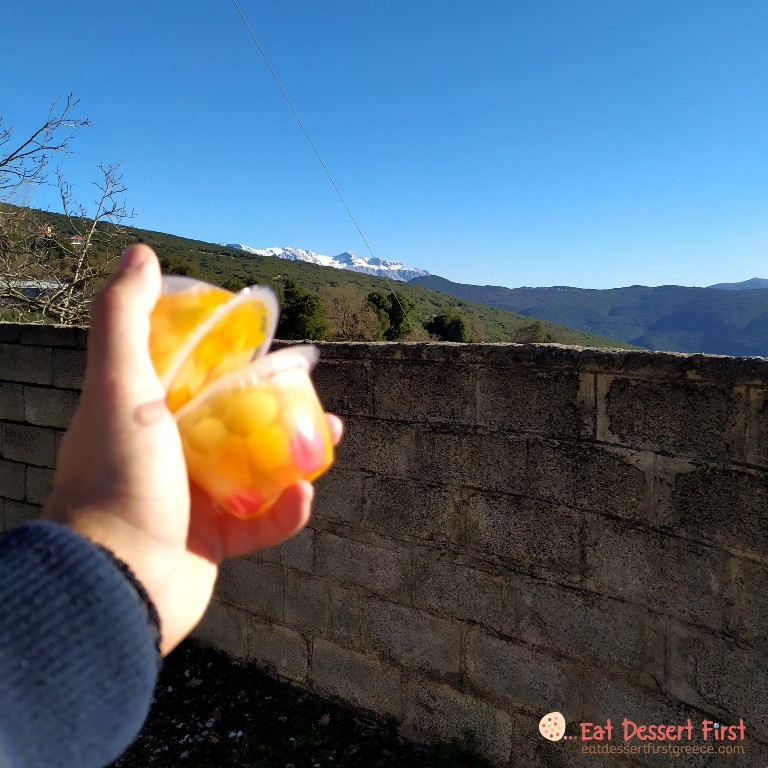
Having returned to Ioannina we wanted to go shopping, to get souvenirs to bring to Athens, as our trip to Epirus was coming to an end. And what better for a souvenir than traditional products? So we went to Bahar Baxe shop, where we met daughter Olga Vranou and mother Athina. Olga told us her story, along with her secrets on how to brew herbs correctly.
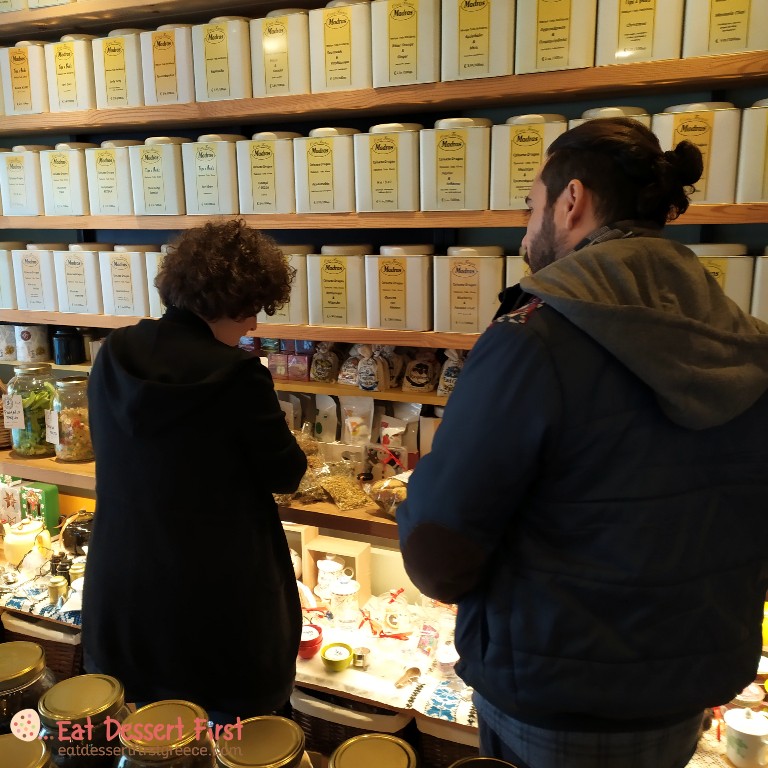
Bahar Baxe has been operating for five years and cooperates with local products’ companies from various parts of Greece, trying to support all of Epirus products. She chooses carefully the products available in the shop and wishes to support small businesses, because this way she can know who, where and how produces each product. She aims to create a network of trustworthy, quality partners.
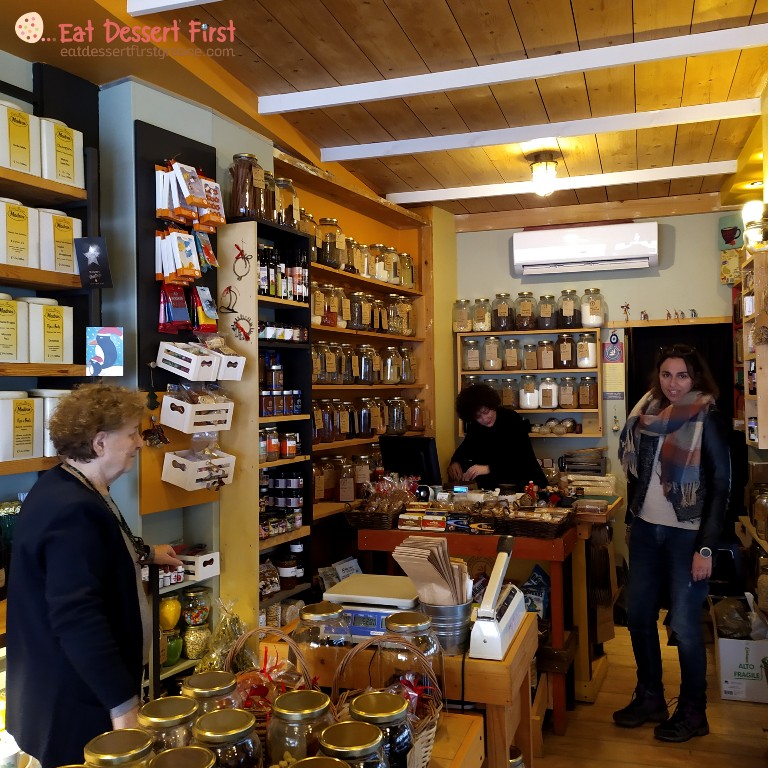
Olga shared with us a problem that she and Epirus in general face concerning the transport of products from some places of the country. For example, transport from islands is very hard and therefore a small shop can’t support a small producer from an island by making a small order. Even from Larisa city, the transport costs are quite large as there are no transport companies travelling straight from Larisa to Ioannina.
The idea for the shop came from a personal need, Olga’s love for traditional products, especially spices. She noted a lack in Ioannina of such shops, where one can buy bulk products. For Olga, it is important to love food, for example, honey to be more than just a spread on bread. It is a shame that there are so many quality local products, that are valued by foreign tourists and for us not to use them in our everyday lives. Their price may be a little higher than supermarket products, but their benefits, taste and quality definitely make up for the price difference. By choosing local products, we support small Greek producers and local economy, and therefore the economy of the country. Eat Dessert First Greece totally agrees!
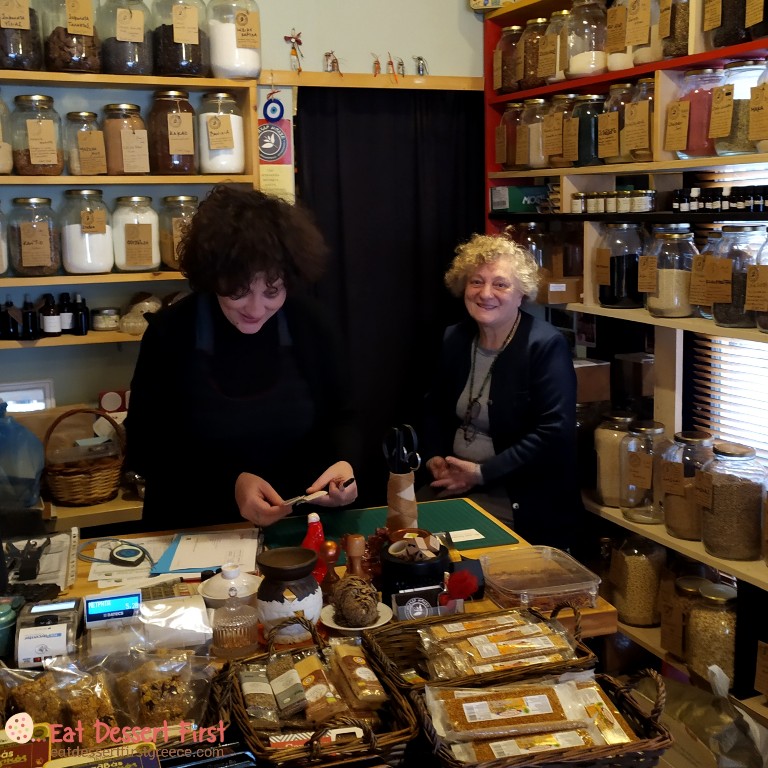
Then, as Olga was packaging the herbs she gave us, along with other products, she also shared with us valuable knowledge she has acquired by reading a lot and asking a lot. Olga would write down secrets and tips she learned from grandmothers and grandfathers and she is sorry, as we are too, that a lot has been abandoned and lost…
Olga’s secrets for brewing herbs
When we want to brew a herb that comes from a dried flower, we must heat the water to 60-70°C. This temperature is reached roughly when it starts to bubble. It is a mistake to boil the water because then the herb gets burnt. When the water reaches the desired temperature, make the extraction, which means add the herb and leave it inside for 5-7 minutes.

A rough instruction Olga gave us is that whatever comes from the earth, wood, root etc. has to boil with the water to 100°C. Such cases are milk thistle and valeriana, which are woody. Also, mountain tea needs 100°C. When we want to prepare a herb that is selected from a higher part of the plant, a more delicate one, the temperature for the extraction must be lower and less time is needed for the herb to “blossom”, and not get “shocked”. This is how we should prepare chamomile. When brewing herbs we shouldn’t follow the same logic as when brewing coffee, to make a strong extraction and get a dark drink. The herb, in order to extract its essential oils, has to be treated with grace.
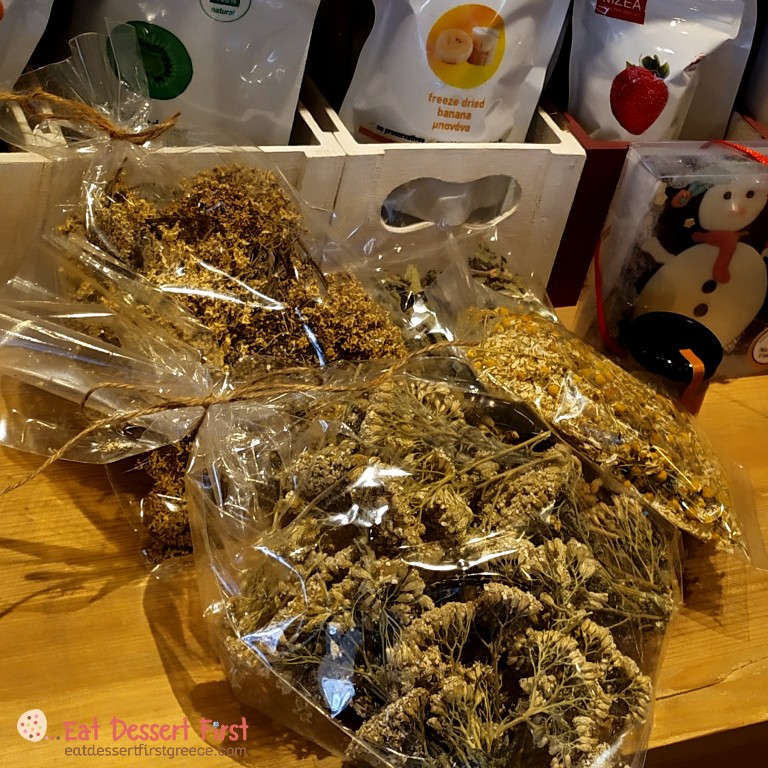
As for the dosage, the traditional way is to use a pinch, as much as each person’s fingers, the thumb, the index and the middle, catch. This is the dosage for a common 250 ml cup. It is a quite accurate way of calculating, as the dosage each person needs is related to his age, hight, weight, characteristics that correspond to his fingers’ size and therefore the pinch he will catch. The conclusion is that the person who will enjoy the drink must select the quantity of the herb himself!
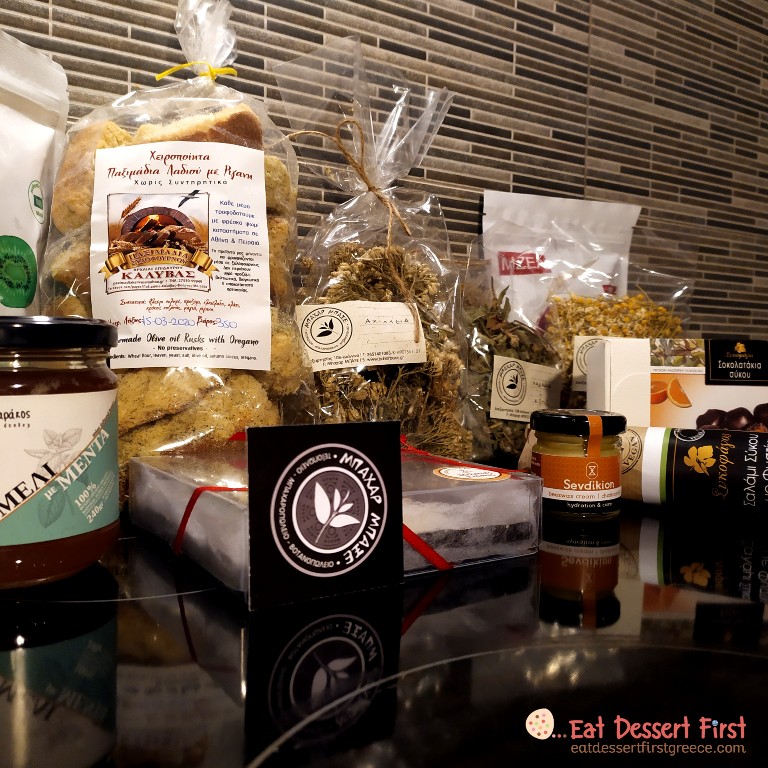
We left Bahar Baxe with a bag of products from Epirus and other places of the country, chosen by Olga and mother Athina especially for us. We warmly thank them for the gifts and the valuable information!
When hearing sweet stories and having a great time, you lose track of time! It was already afternoon, the usual chill had started, but we, as fearless wanderers and sociocultural researchers, had to take a last walk in town, in case we discovered just a little more…
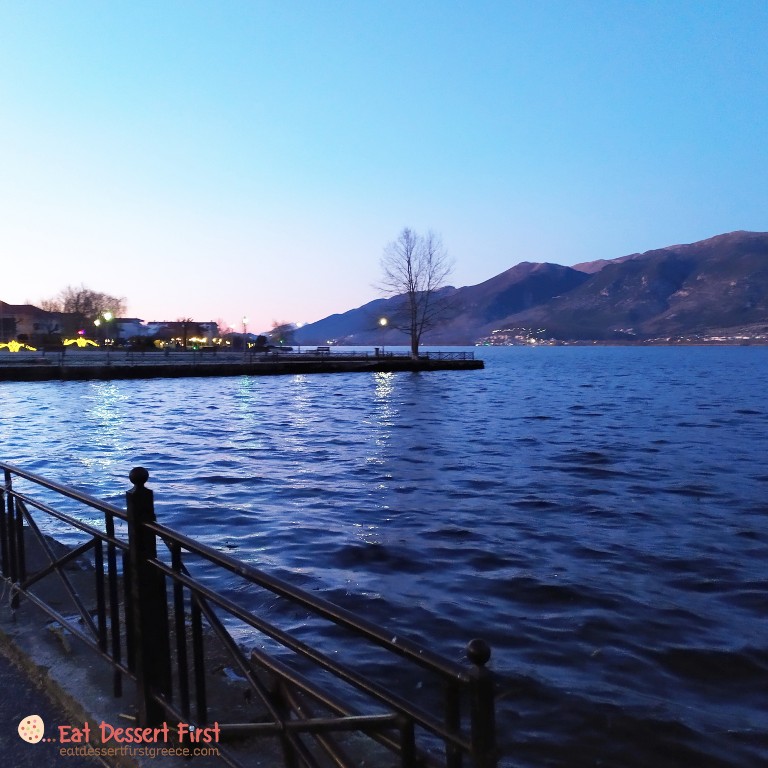
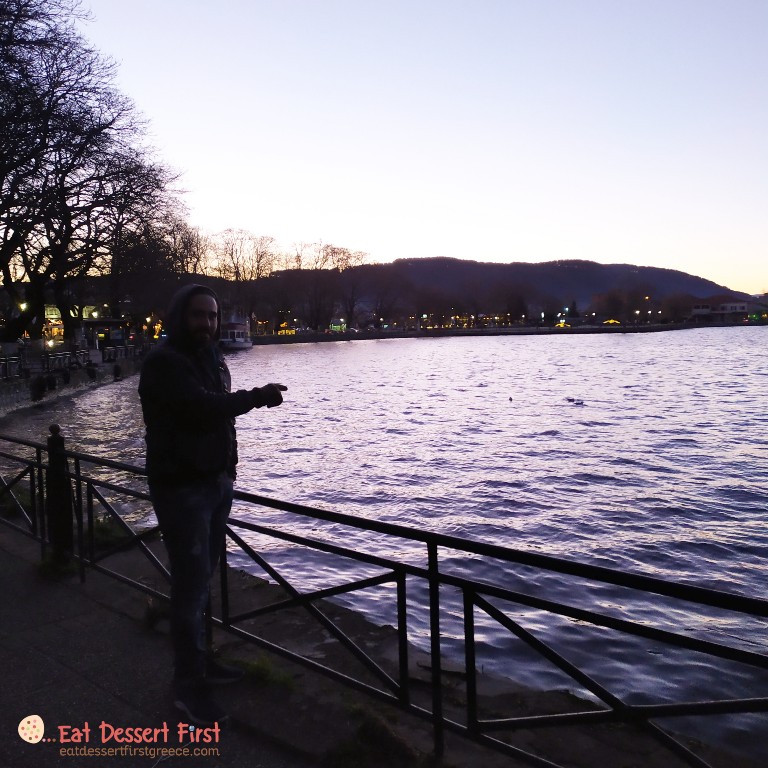

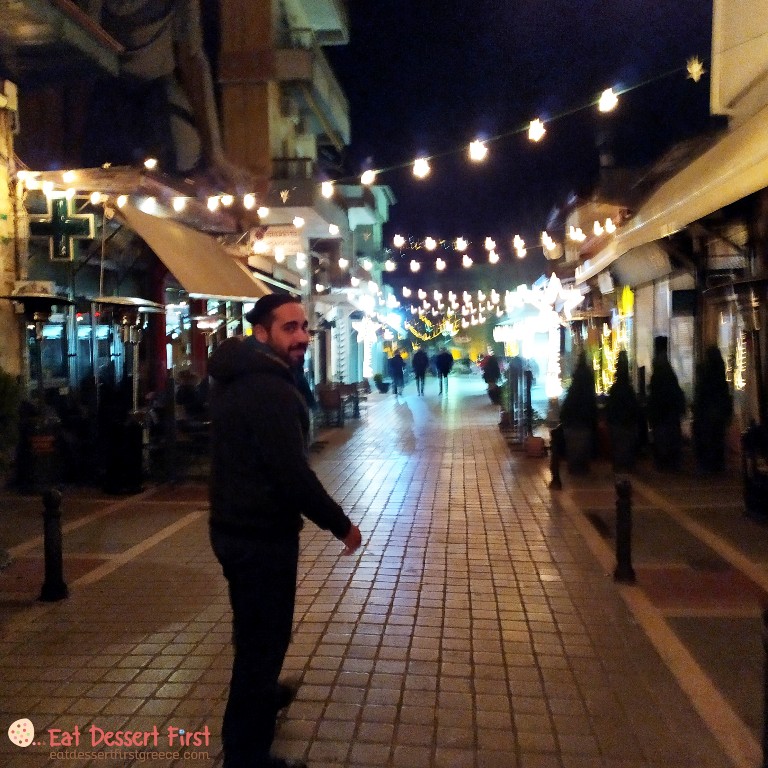
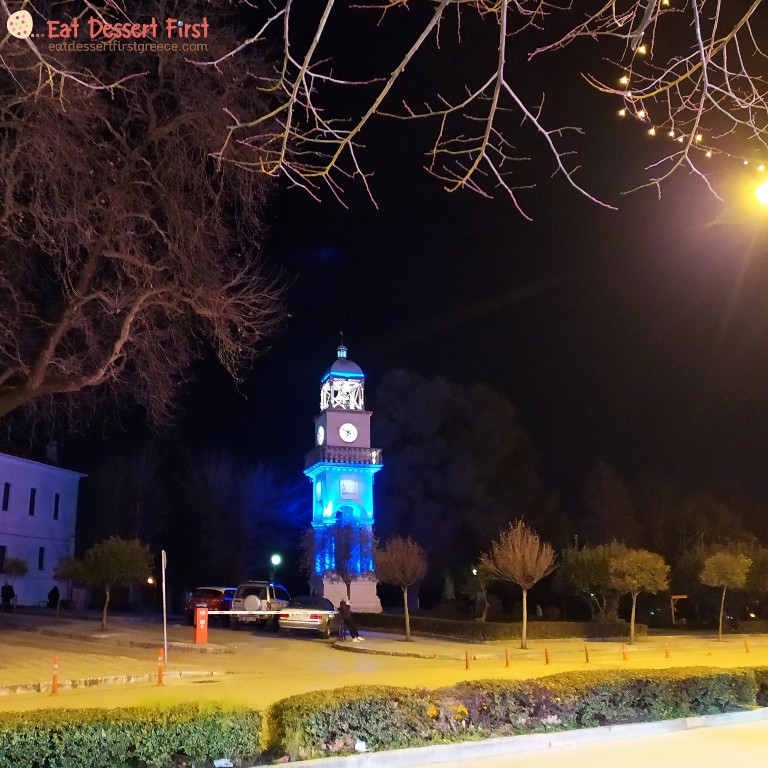
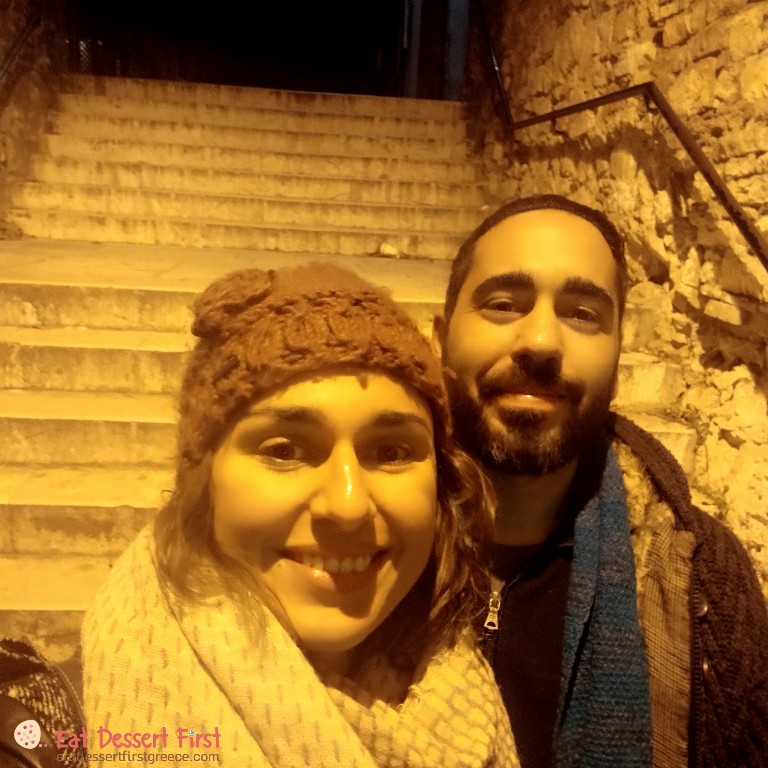
Wanting to make a last visit to the area inside the castle’s walls, in case we had missed anything, we passed a store that cought our eyes. We got inside and met mother Stavroula Zoi and one of her daughters Katerina Nikolopoulou, and when spontaneously suggested an interview, they happily agreed!
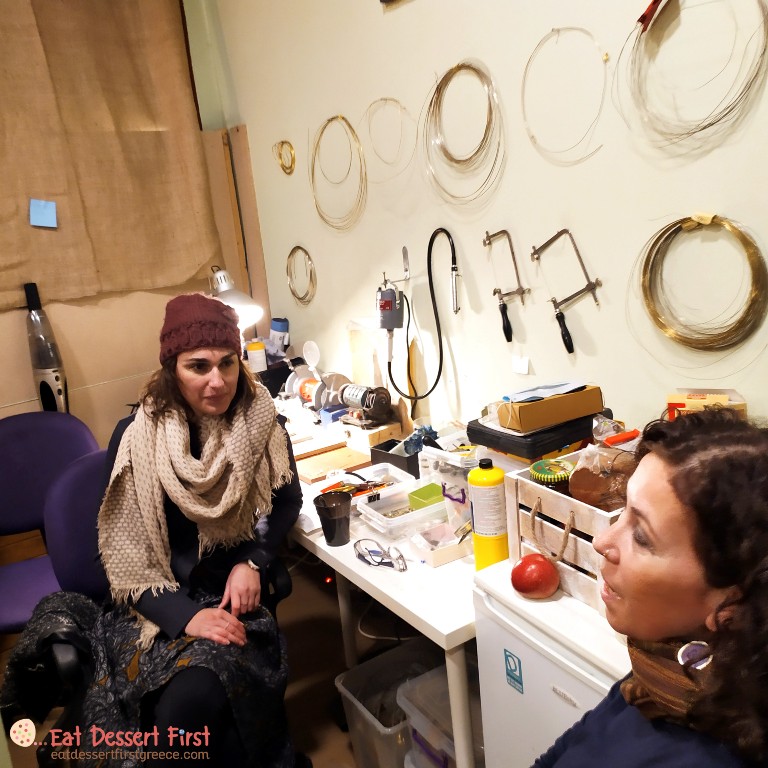
The AnKa arts store gets its name from the two daughters, Anna and Katerina. Together with mother Stavroula and their father, the whole family makes handmade items, jewelry, decorative items and artworks. It is a total family business, everything they sell they make it themselves, as they have done with the space that has been operating for two years, from the colours of the walls and the furniture to the sign the father engraved and the logo Katerina designed. For Stavroula, their jewelry is their own imprint, with their personal taste, on the traditional art of silversmithing. They use traditional techniques and add their contemporary touches, by painting on the metal. The husband has done all the construction work in the store, without him nothing would have been done, Stavroula said, and he likes working with metal wires very much.
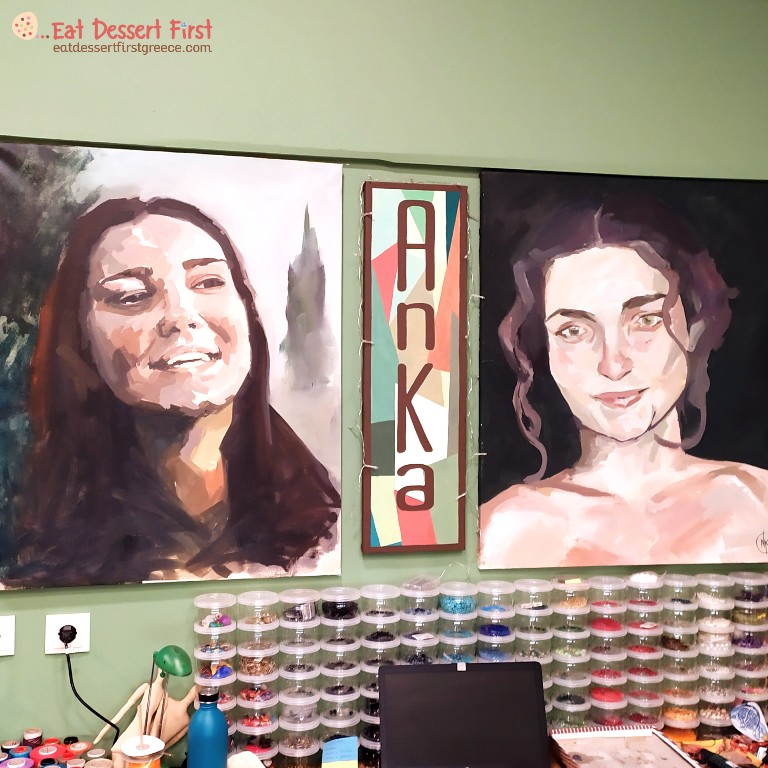
The paintings are made by daughter Katerina who this year is finishing the School of Fine Arts of Ioannina University and has already started her professional activity in the store. Katerina told us that she chose those studies thanks to an arts teacher in high school who noticed her talent and encouraged her to follow this road. Her mother still remembers the teacher’s words “your kid is made for there”.

Katerina mentioned that the Fine Arts School of Ioannina, which used to be called Plastic Arts School, is downgraded compared to other Fine Arts schools in Greece. Many students may have ended up there, because they didn’t have grades high enough to get into their school of preference. However, for those who are really interested, they will find there all the help and guidance they need and Katerina is very satisfied and proud of her studies.
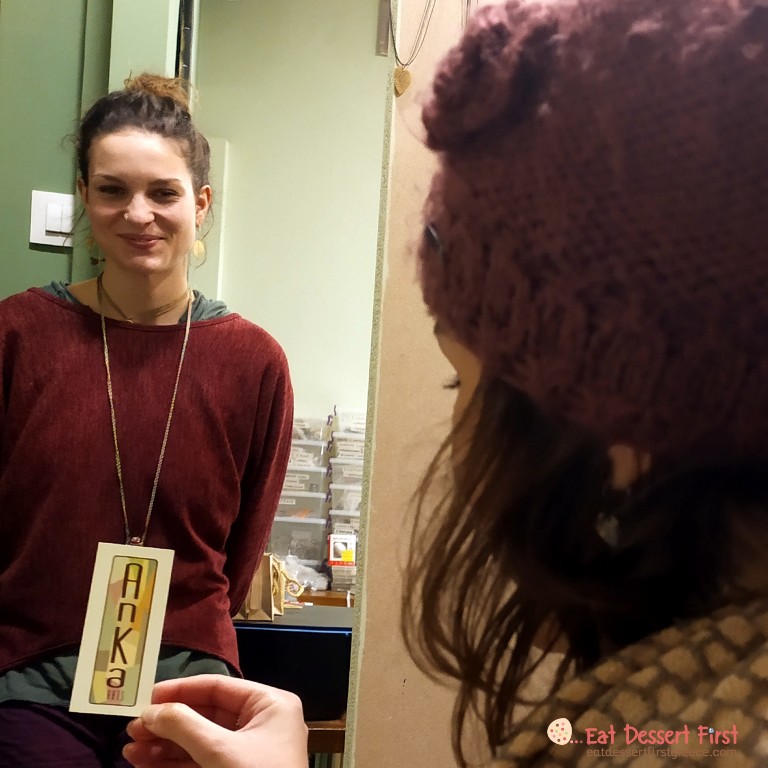
The second daughter, Anna, studies in the School of Agricultural Technology in Arta, but she is more interested in art and the family business. She participates actively in everything that concerns the store and makes her own creations, while practicing also body piercing. She loves dogs and cats, so she has created a collection of jewelry with animals.
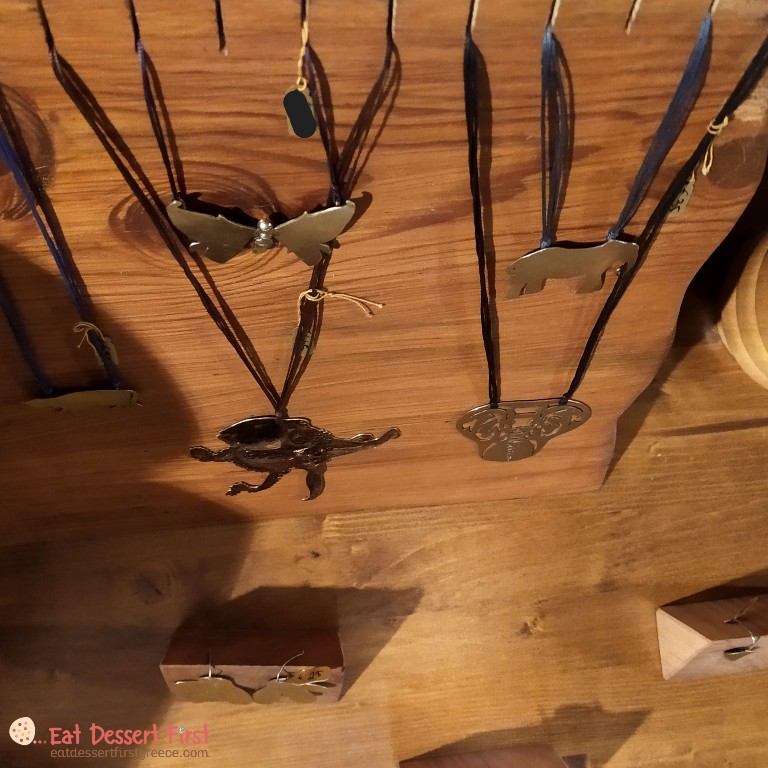
Mother Stavroula told us their story. She started everything, as from a young age she loved crafts, such as weaving with the loom in her village. Until 2011 the family lived in Athens and didn’t have connections to the market of Ioannina, although originating from there. At the beginning Stavroula started as a street artisan with a bench by the lake. She had created a group that at some point reached 180 members, the Lake Crafters, which eventually got apart. At the time Stavroula would make jewelry with textiles and didn’t imagine that her future would be working with metal. The family lived in the castle’s area and when they saw the store getting empty they made the decision and transformed it into the art shop we see today.
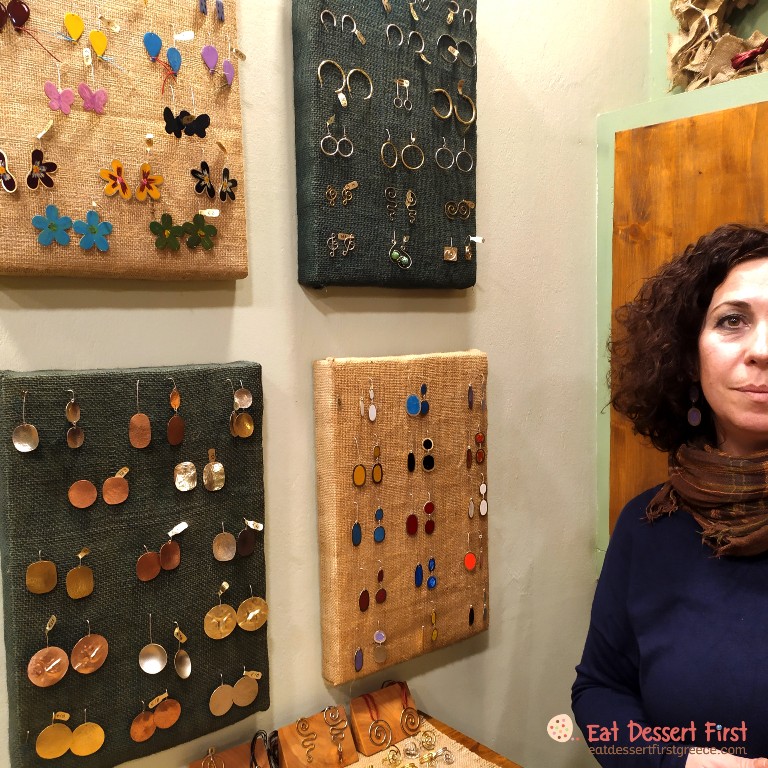
AnKa arts family doesn’t miss Athens… Every day they can have their walk around the lake and look at the mountains, as Stavroula told us. Many photography and theatre companies come to Ioannina to perform selected plays that you can’t miss. On the contrary, in Athens there are so many choices that one ends up getting bored and missing them.
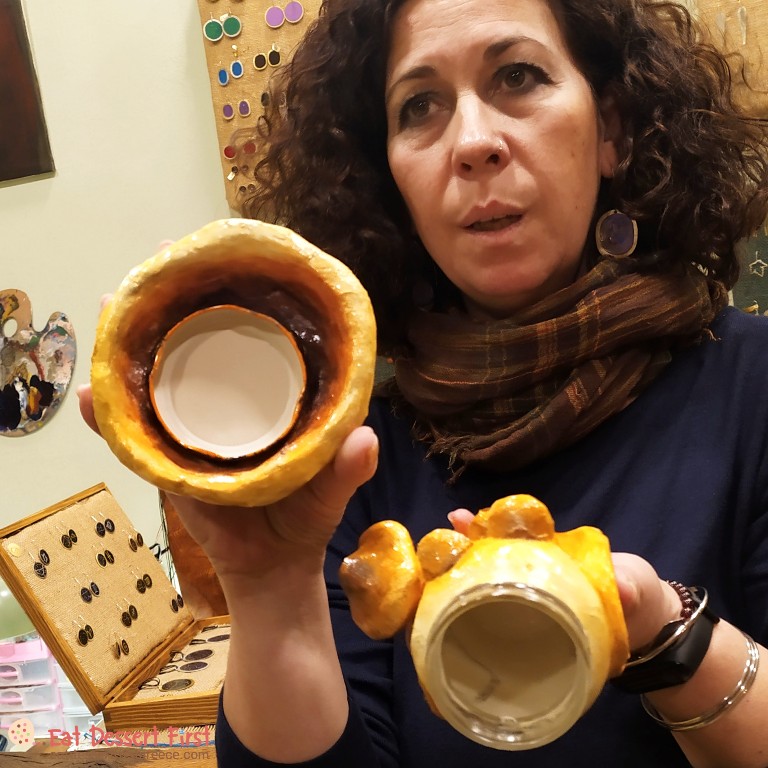
The spot where the store opened, inside the castle’s walls, is privileged as they come in touch with many people, but not mass tourism so much. Soon they will create a workshop next door where the daughters will work. For Stavroula it is important that their daughters can stay in Greece and aren’t forced to move abroad, unless it is their choise which then she will support. The matter of young people being able to stay in the country comes up often in our talks with the people we meet. It was highlighted by both father Ilias of the Holy Monastery of Agia Paraskevi in Monodendri and nun Evfimia of the Holy Monastery of Evaggelistria in Ano Pedina, who offer hagiography and mosaic lessons to students and older people.
Stavroula also makes handmade “Tilda” dolls. This started when she obtained at the same time many nephews and she wanted to bring them handmade gifts. To make the dolls, she draws the pattern on textile and fills the bodies with wadding. Stavroula showed us amazing photos of the dolls in various places of the city by photographer Menelaos Sykovelis.
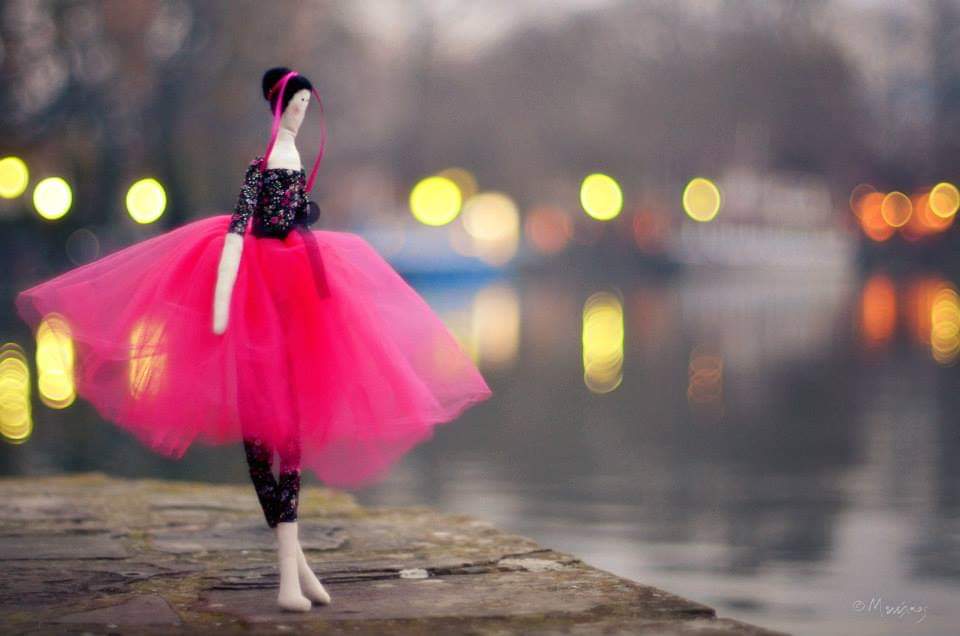
(photo: Menelaos Sykovelis)

(photo: Menelaos Sykovelis)
Something else we liked a lot is that Stavroula sometimes tells children who come to the store to make a drawing, and then on the spot she copies them with carbon paper on metal to make jewelry. She lets the kids hit the metal, chose strings, the breads… This way, for example, a mum can get a piece of jewelry “made” by her kid!
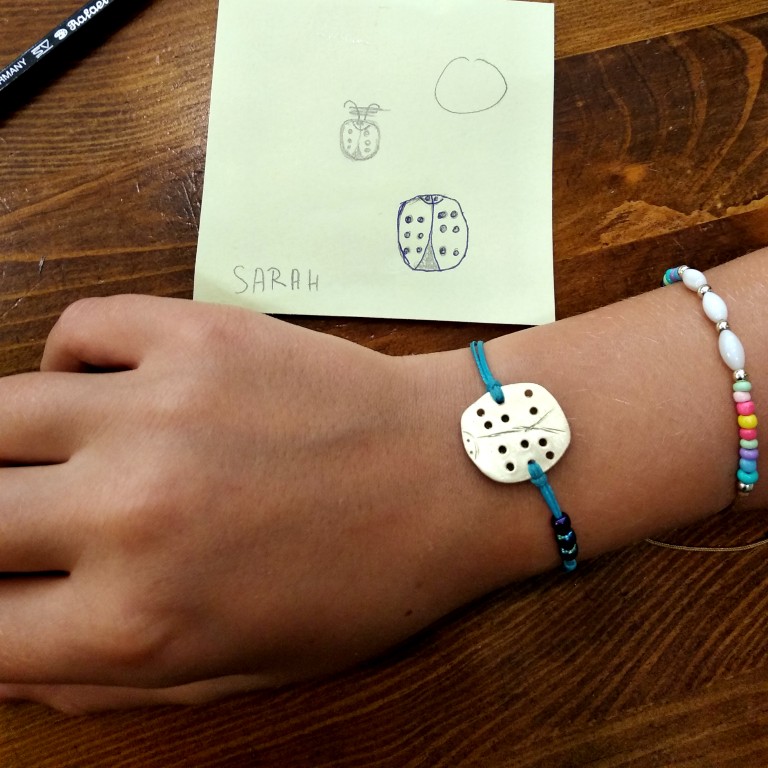
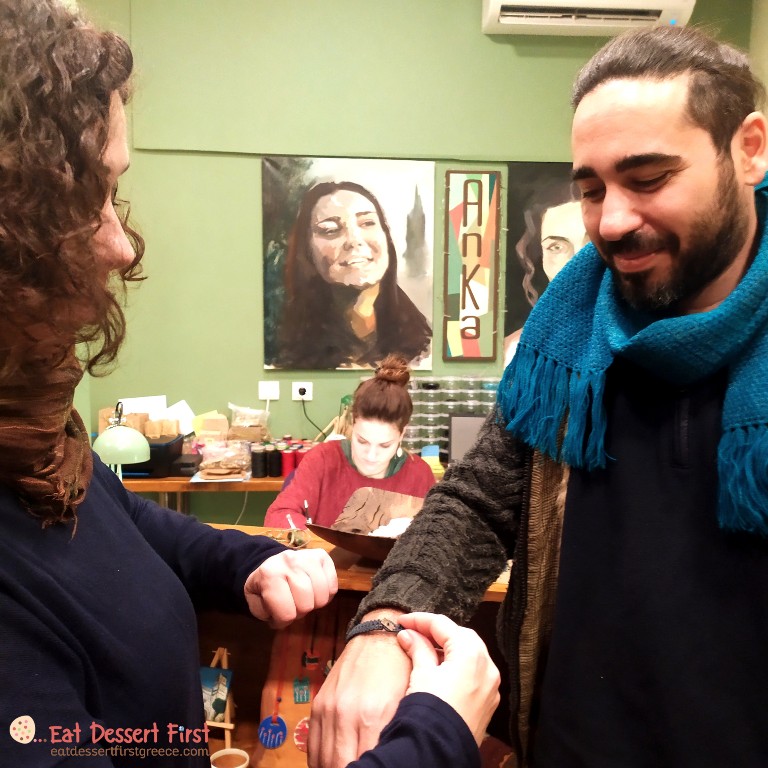
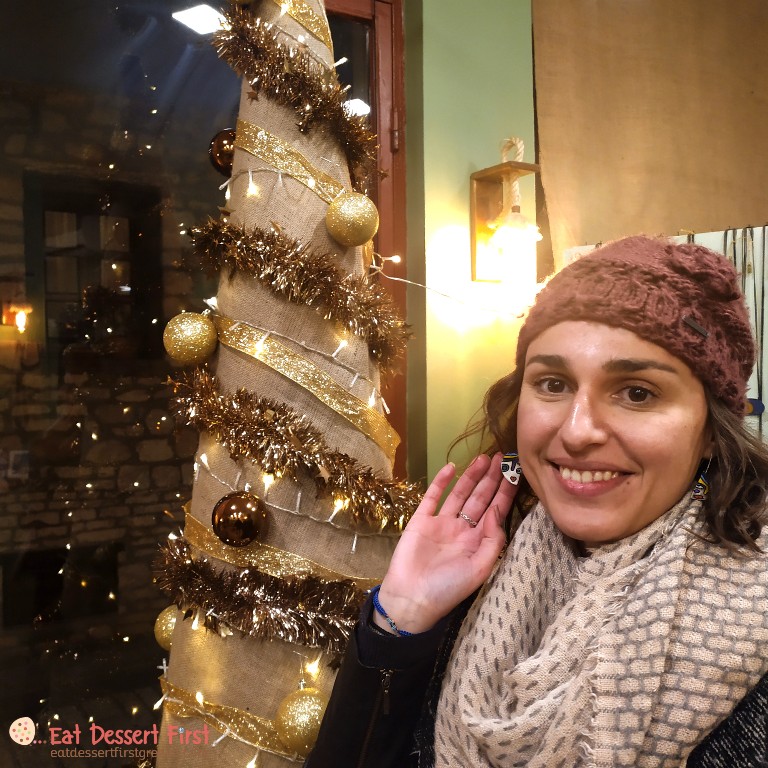
On our way out, except for all the sweet stories we listened to, we keep a wish that for Stavroula is very important: “health to your hands”!
One of the gifts AnKa arts family gave us is a souvenir card, painted by hand by Katerina. This is how all the souvenir cards of the store are made. We went to the small square nerby that the card depicted, and there we found a sculpture by the very important Greek sculptor and professor in the Aristotle University of Thessaloniki, Costas Varotsos. It goes without saying that we had to take pictures of our discoveries!
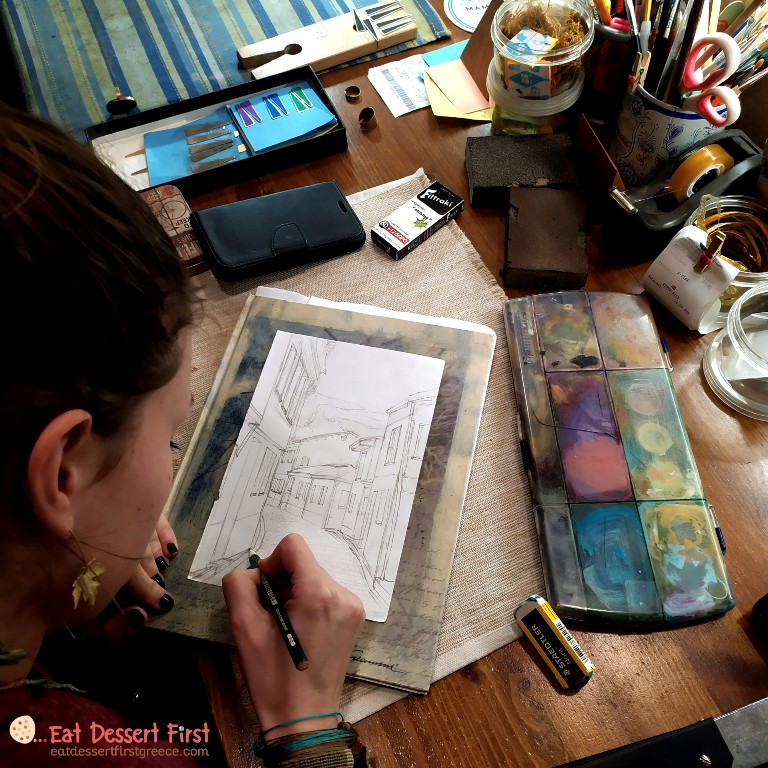
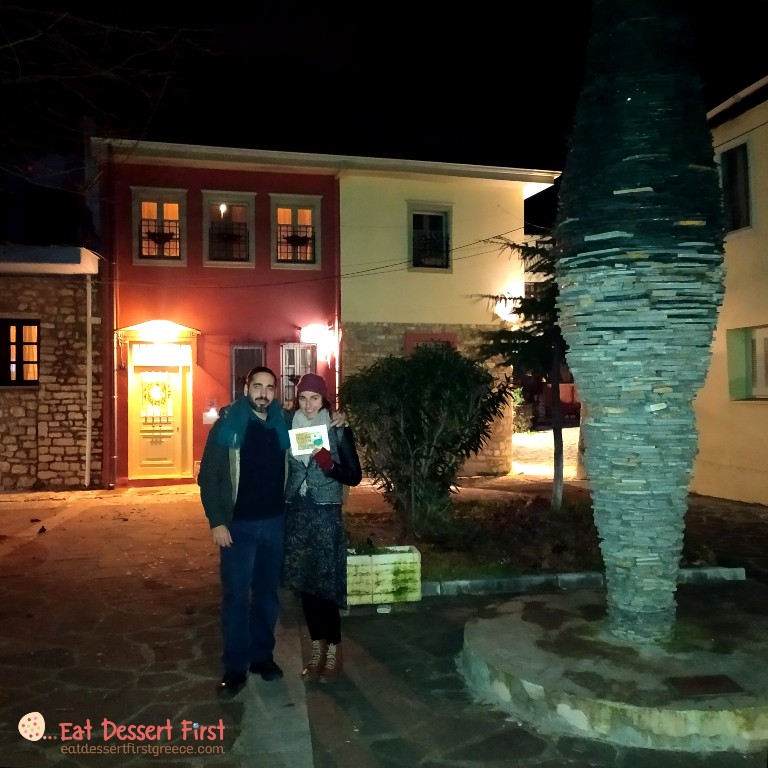
After all these beautiful images, words and thoughts we gathered this day, we had to eat something tasty! This time we had a craving for authentic Italian cuisine, so we headed towards pizzeria Damiani L’Artista.
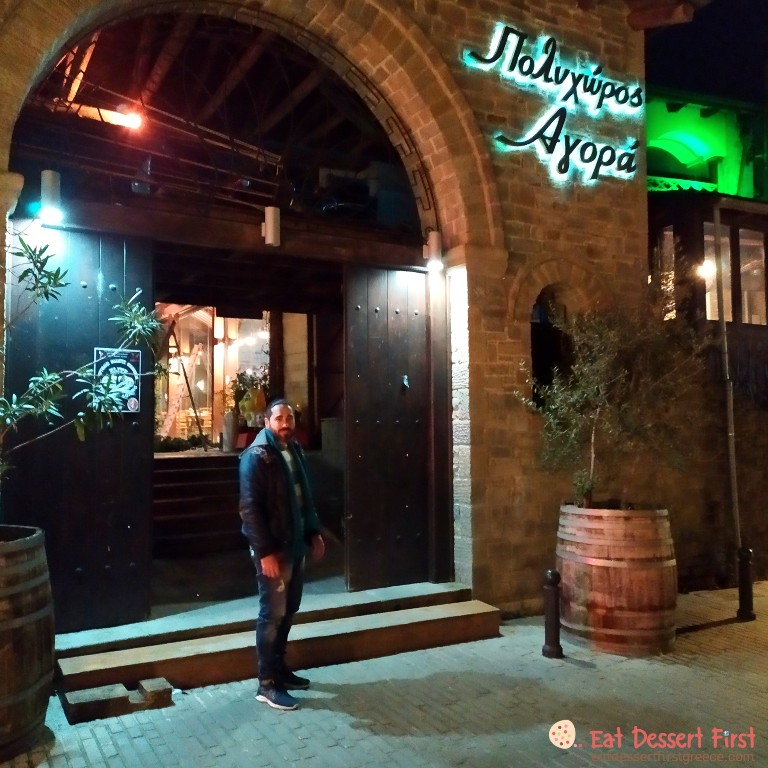
We sat and asked the chef and restaurant manager Periklis Balatsos to say a few words about the pizzeria. With great willingness he told us that it belongs to Nicola Damiani, an Italian from Bari that loves Greece very much, maybe even more that Italy, as he has been living here permanently for seventeen years. The name of the restaurant is due to the fact that Nicola Damiani is an artist too, awarded in Barcelona and Tokyo for his artworks.
Chef Balatsos shared with us his feelings about his workspace, saying that it isn’t a business, it is a real family. Nicola Damiani is the head chef of the restaurant. He is a teacher for everyone who works with him, said chef Balatsos, and he wouldn’t exchange what he learned beside him with any school in the world. Nicola can create things we can’t imagine out of nothing. He has transmitted that to the rest of the staff, who experiment everyday with new recipes. We even had the luck to try the raviolloni that chef Balatsos created just this morning!
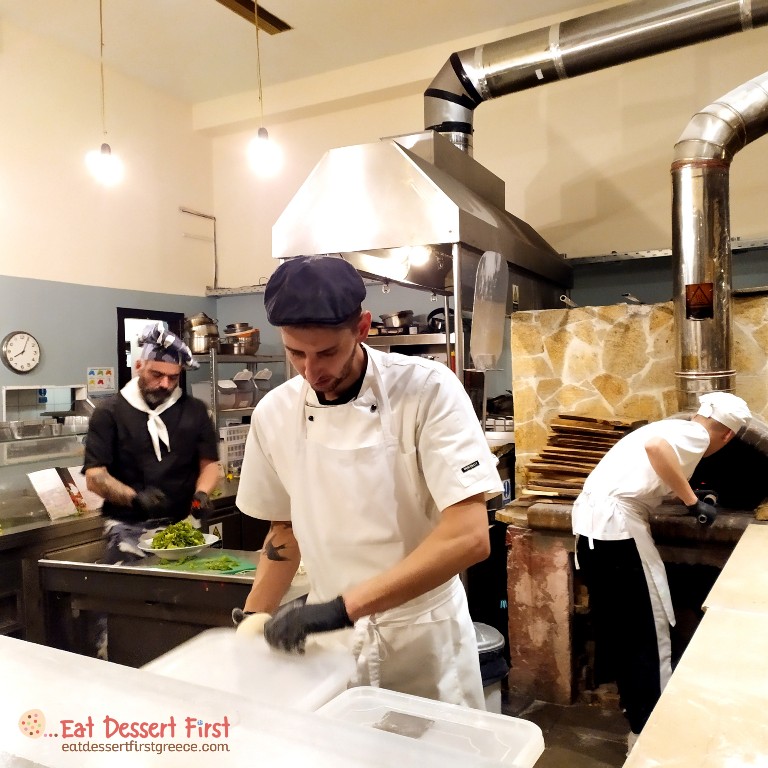
The restaurant is very busy, visited by foreign tourists but also very much loved by Greeks from all over the country. For example, reservations are being made for Christmas even before the visitors start their trip! In Damiani L’Artista, they create friendly relationships with the customers, who may come from Sweden or Norway, as they meet frequently. Italian customers are so many that they can’t even calculate them.

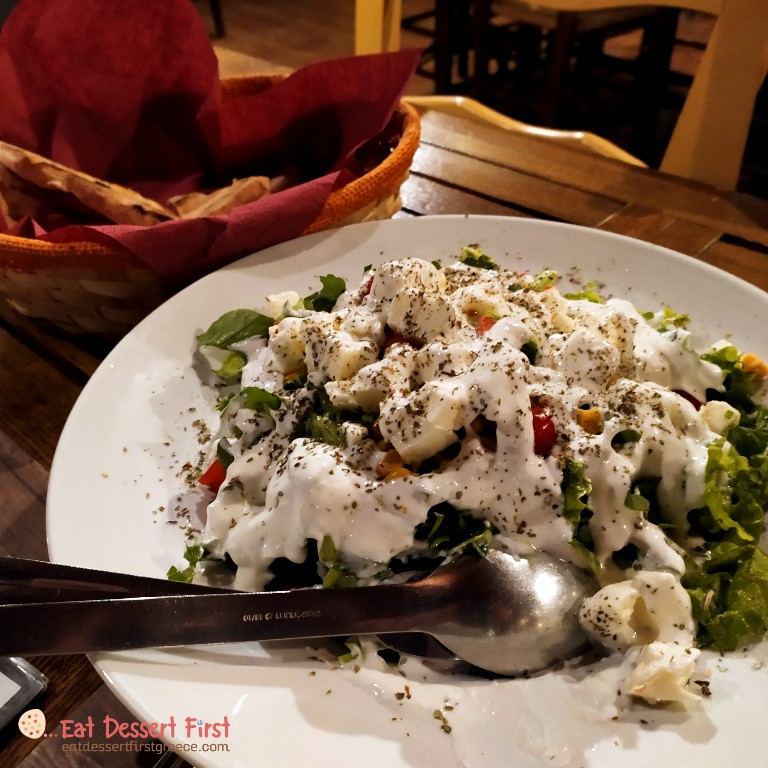
The pasta that Damiani L’Artista serves are all handmade in the restaurant, from spaghetti to more complex pasta, one by one by hand. In the morning, an Italian cook made the farfalle we tasted. As chef Balatsos highlighted, they don’t buy anything, they make everything in the restaurant, from croutons and jams to pasta and sauces.
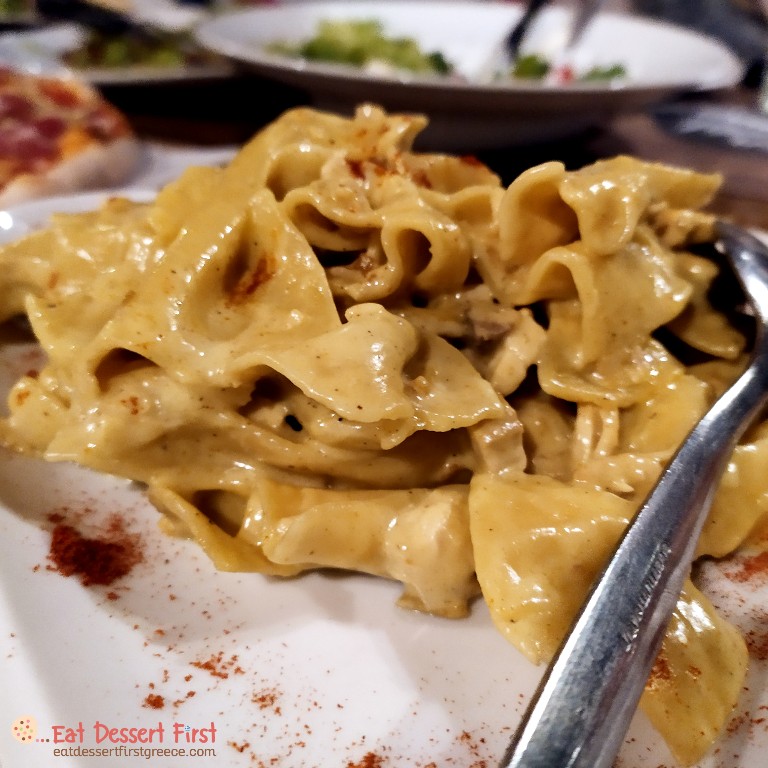
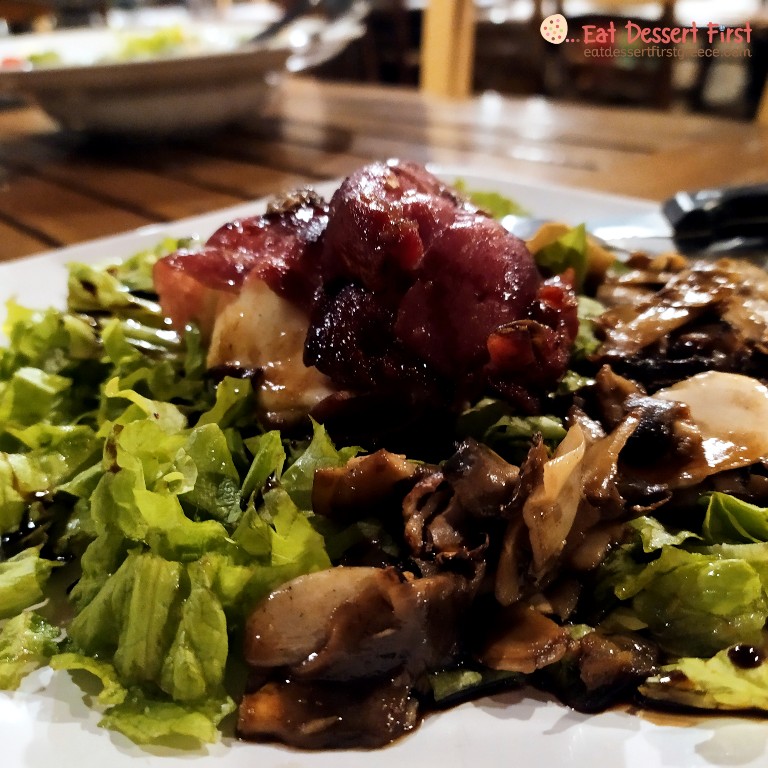
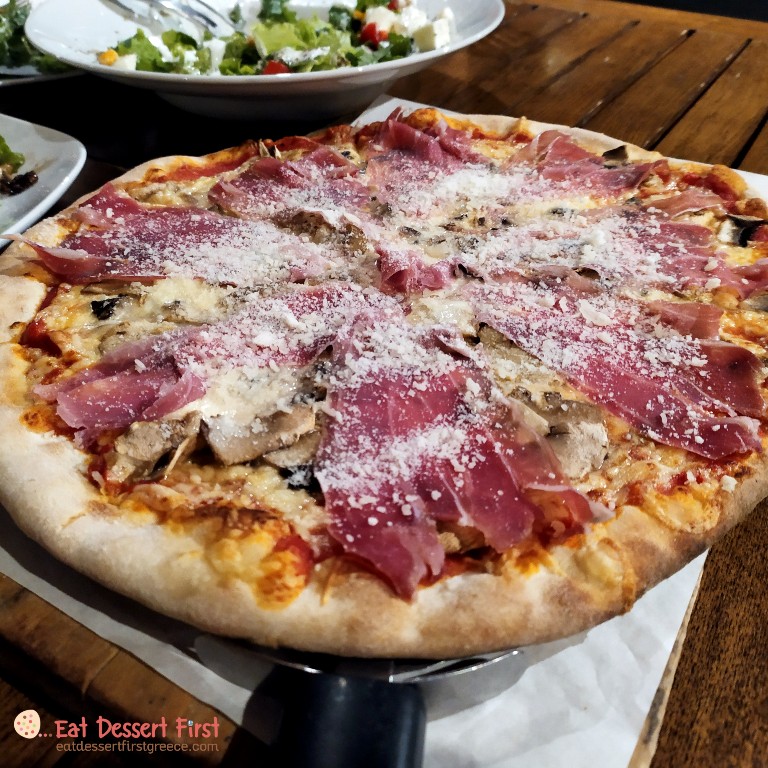
Damiani L’Artista also organises philanthropic actions. For example, chef Balatsos told us about an event they had organised in December to support the Home for Women Violence Victims by OKPAPA. Invited artists created artworks live in the restaurant, while customers enjoyed their meals. In the end, a lottery draw took place and the artworks were shared to the people. Also, Damiani L’Artista supports Kivotos tou Kosmou, an NGO of Mother and Child Protection run by father Antonios, by offering meals in the restaurant to the children or by going to their space to cook with them.
Chef Balatsos told us that he will prepare for us a selection of pasta, and the outcome was so much more than we could imagine, both in quantity and flavor! He mentioned that they always have the habit of cooking a lot, whether for customers or visitors like us.
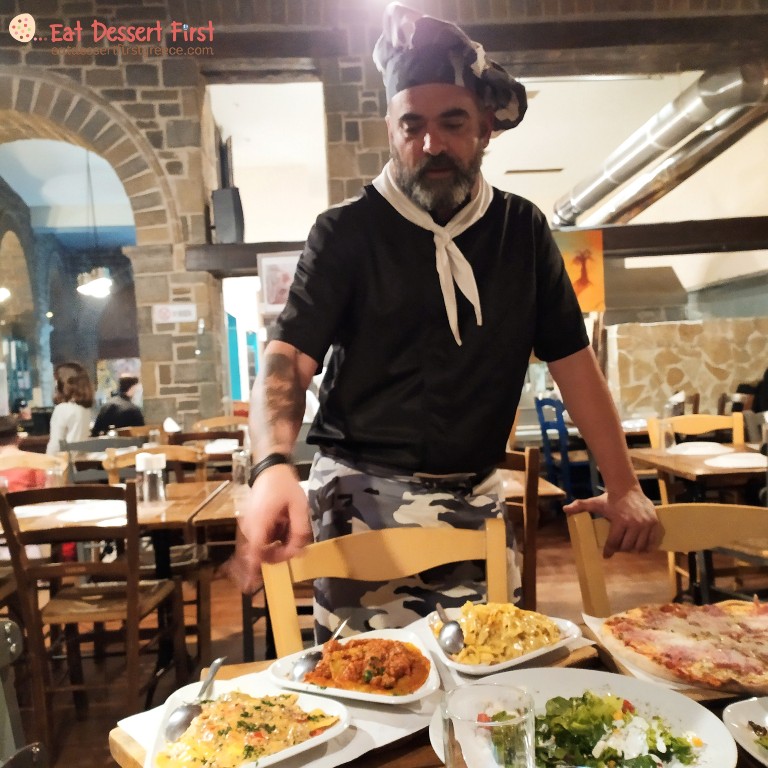
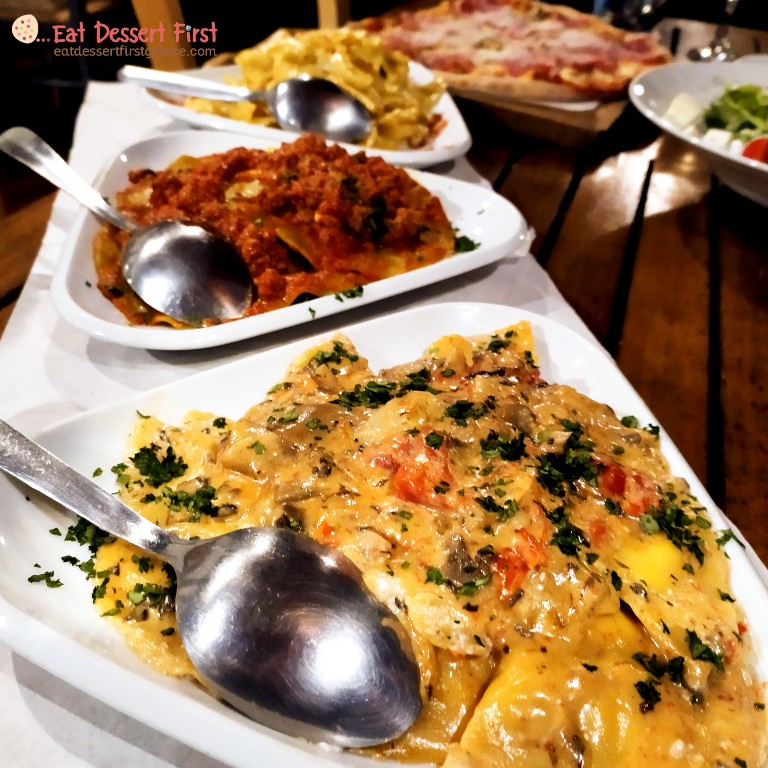
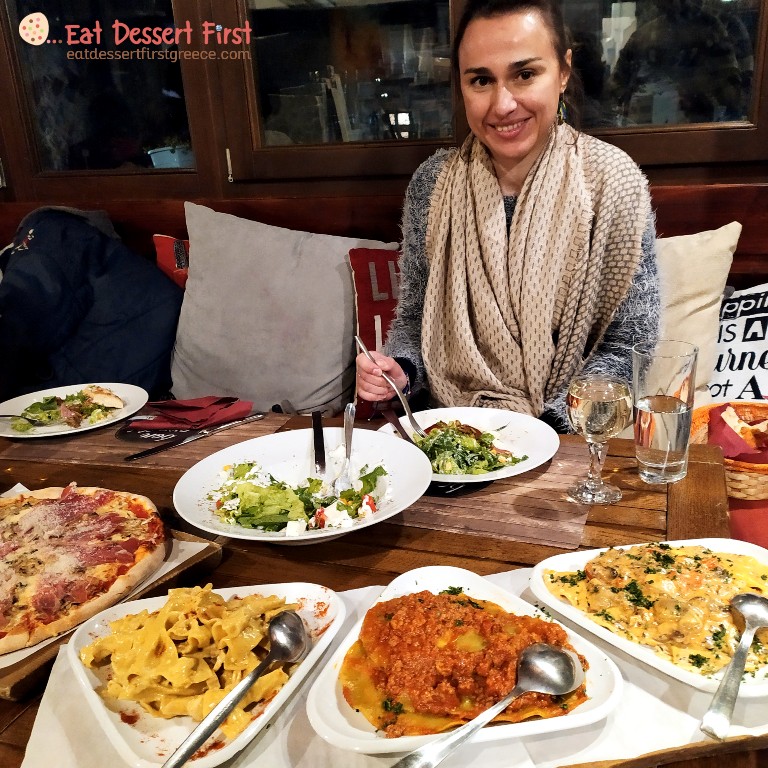
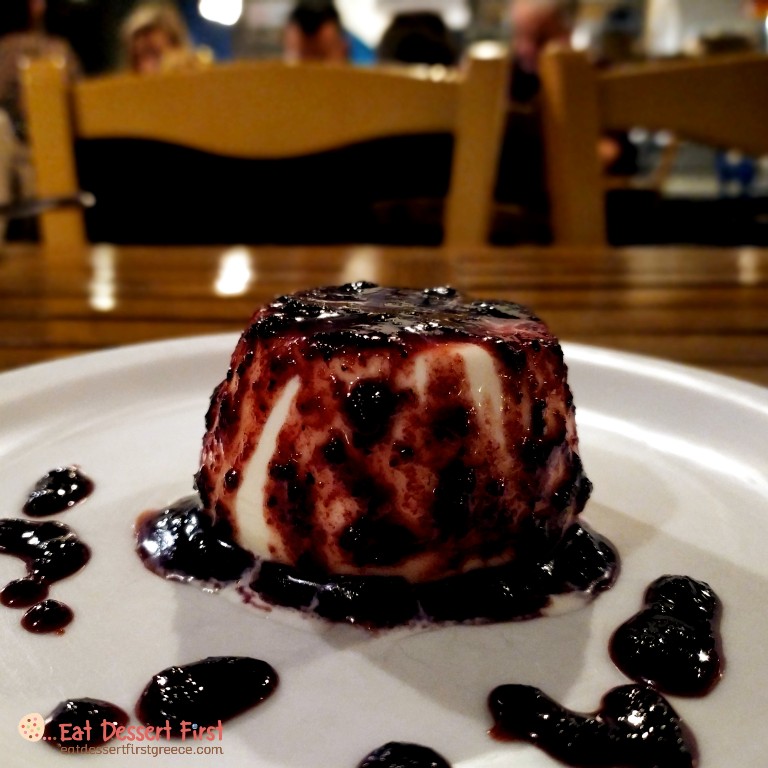
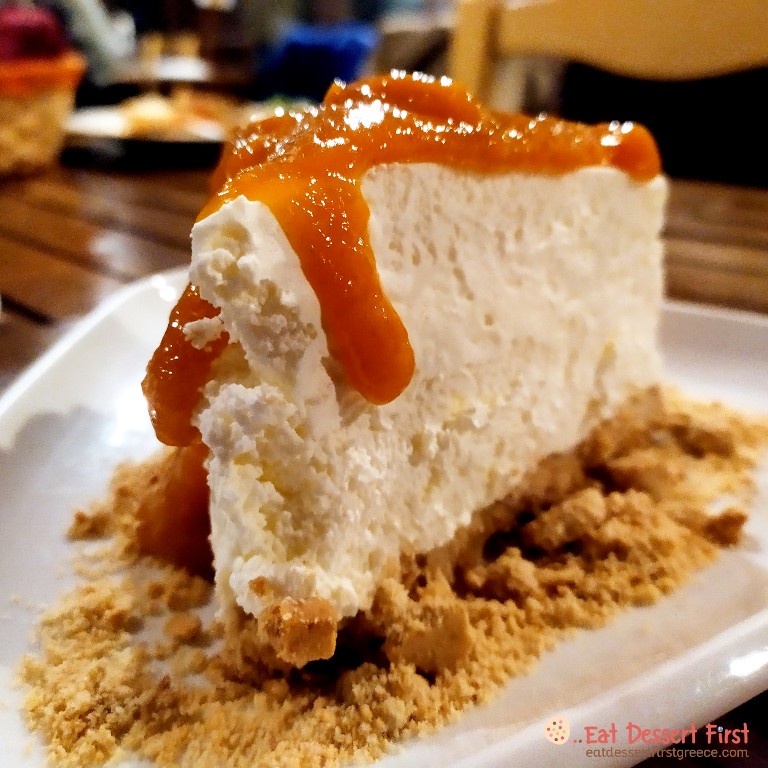
To end a sweet evening chef Balatsos treated us with an awarded in Europe liqueur that is produced in Arta, flavoured with coffee and anise, and also with the classic limoncello. We thank him from our hearts for the authentic food and the mini interview he offered us!
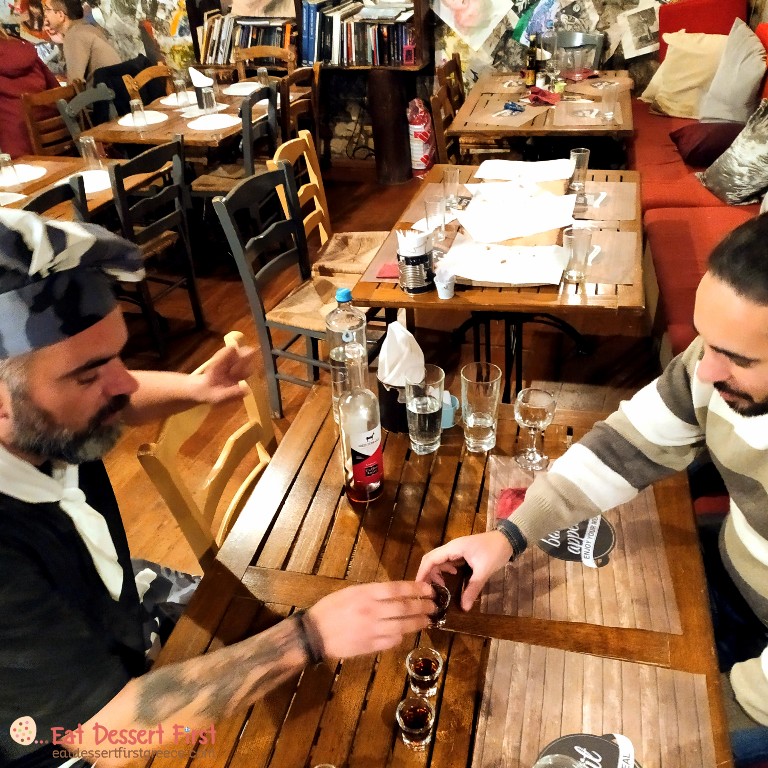
After seven days in Epirus full of friendships, flavors and images and after four rich articles, we return to our base in Athens for new sweet adventures! We warmly thank “Theodoros Papagiannis” Museum of Contemporary Art for the information they gave us, Mr. Aimilios Patsiouras for the spontaneous talk and the treats, Bahar Baxe shop for everything they shared and gave us, the family of AnKa arts for the interview and gifts and pizzeria Damiani L’Artista and its chef for the talk and dinner he offered us.

Be the first one to read our new articles!
Follow us on Instagram (@eatdessertfirstgreece), on Facebook (eatdessertfirstgreece) and on our new page on Twitter (@eatdessert1stGr) to read our new sweet articles.
Follow us by submitting your email into the box you will find if you scroll down our page, so that you receive each new article by email as soon as it is online. Don’t forget to confirm your subscription, in the email you will receive! 🤗 For wordpress bloggers like ourselves, just press the follow button.


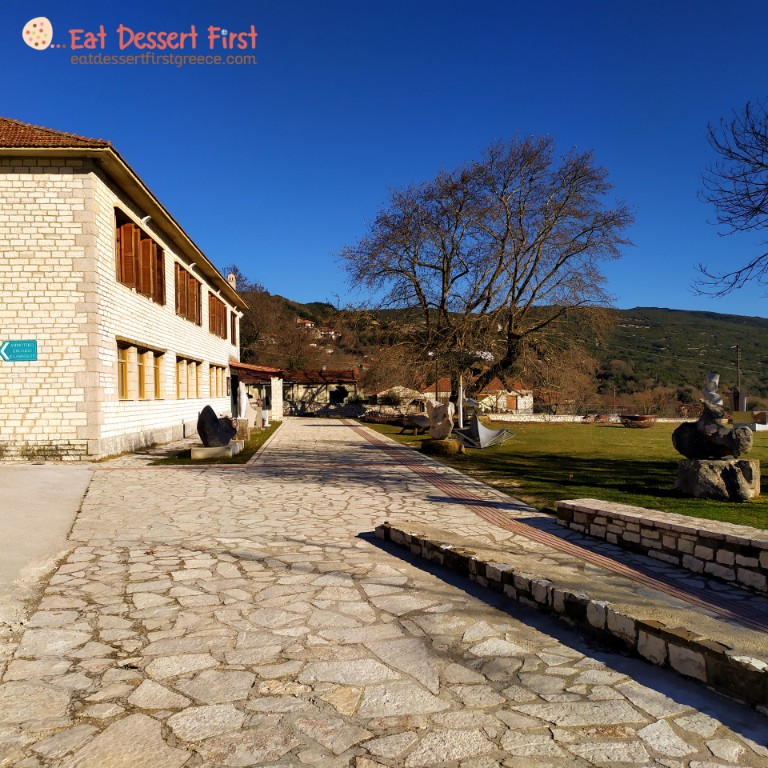
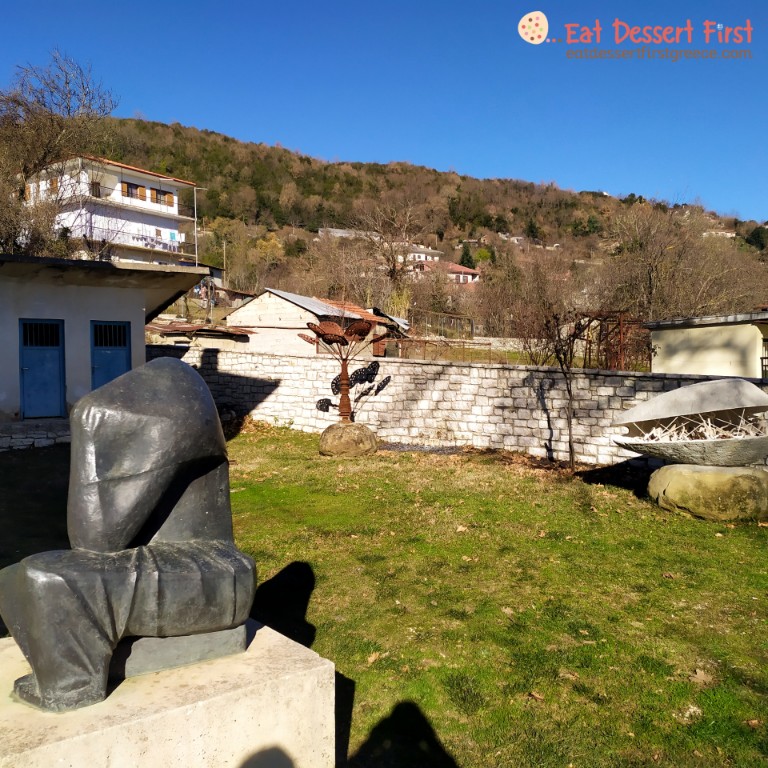
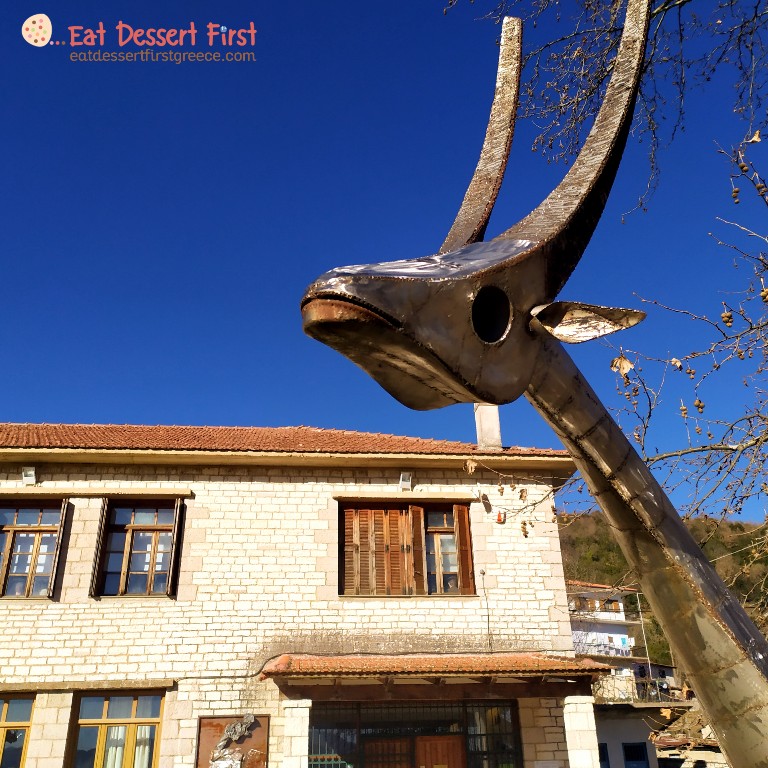
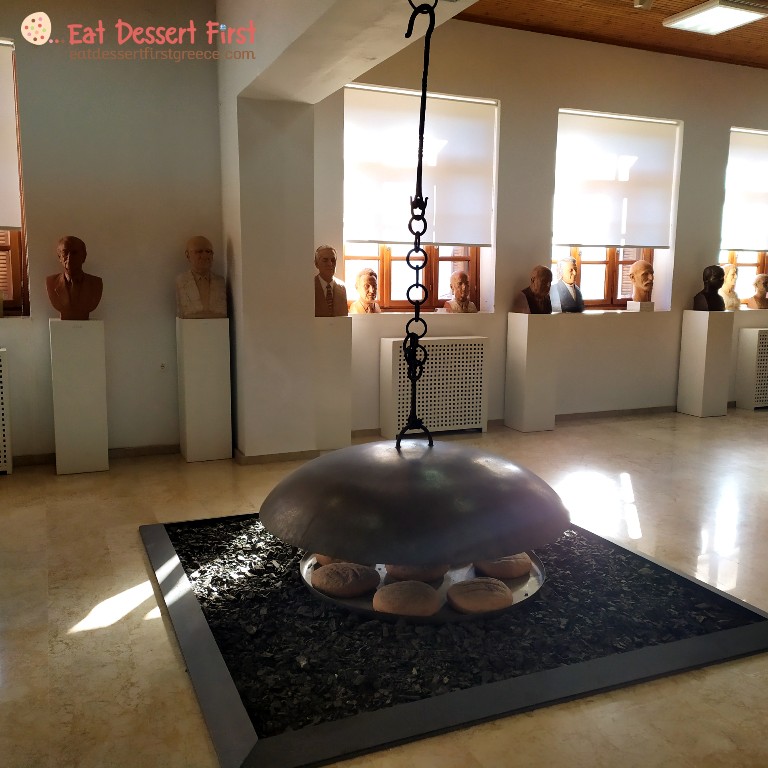
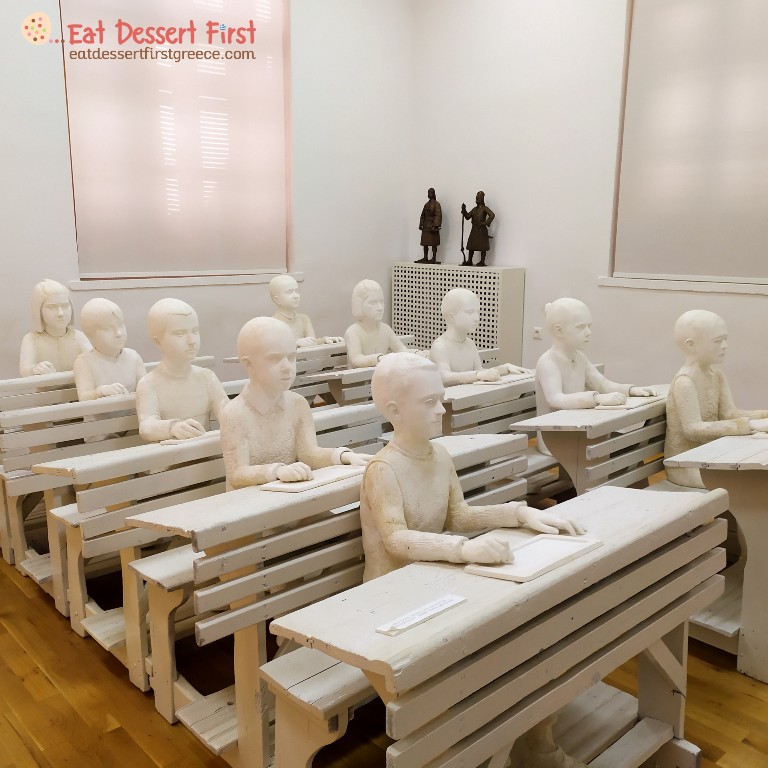
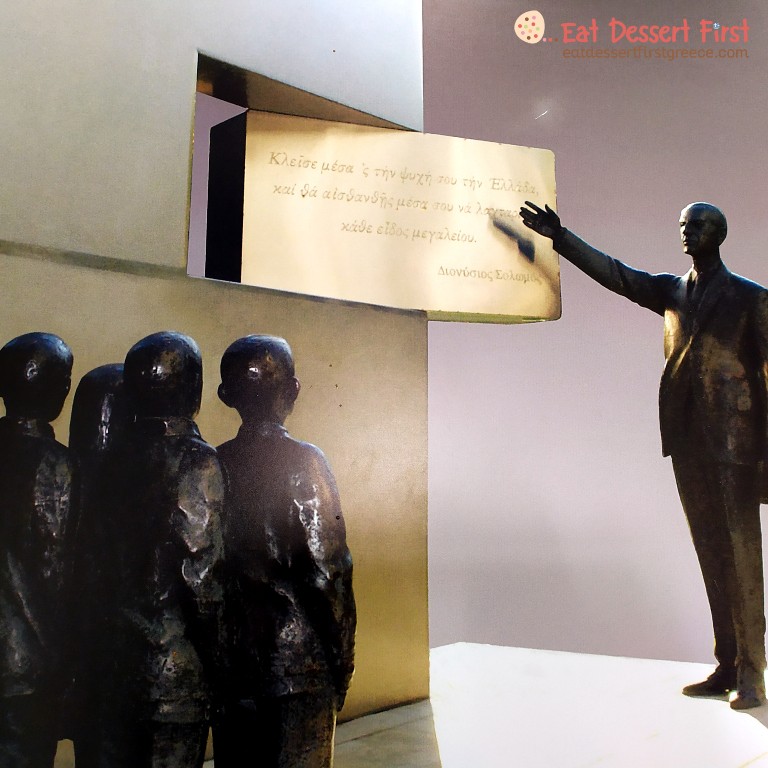
Amazing adventure
LikeLike
Thank you very much, it was indeed!
LikeLiked by 1 person
Such a charming village. It seems to be one of those places that sticks with you. I hope that you made some great memories 😉🤗 love and best wishes 💜
LikeLike
Thank you very much! Yes it was great, we spend a great time there! Love and best wishes to you, too! 💞🙏
LikeLiked by 1 person
Reblogged this on Ed;s Site..
LikeLike
Interesting place.
LikeLike
Thank you so much!! 🙏🙏
LikeLike